


OBJNews @obj_news ottawabizjournal ottawa-business-journal obj.ca SPRING 2024 Vol. 25, NO. 3
HOLLOWED OUT: THE CHALLENGES FACING DOWNTOWN GATINEAU
PLUS
FROM SOCIAL
HIGH FASHION:
ENTREPRENEUR’S
How they got through the pandemic and what’s next SUCCESS THROUGH SACRIFICE
HOUSING TO
ONE
STORY TOP 20 FASTEST GROWING COMPANIES

OBJ.CA SPRING 2024 2 A TRADITION
EXCELLENCE. EXCELLENCE
OF
AWAITS YOU THIS SPRING. EXPERIENCE OTTAWA’S PREMIUM LUXURY AUTOMOTIVE BRANDS, VISIT US ONLINE AT: MARKMOTORSGROUP.COM
TELEPHONE
Phone: 613-696-9494
News Fax: No faxes, email editor@obj.ca
PUBLISHER
Michael Curran, 613-696-9491 publisher@obj.ca
PUBLISHER EASTERN ONTARIO BUSINESS JOURNAL
Terry Tyo, 613-696-9581 terry@greatriver.ca
EDITOR IN CHIEF
Anne Howland, 613-696-9480 anne@obj.ca
SENIOR WRITER
David Sali, 613-696-9481 david@obj.ca
REPORTERS
Sarah MacFarlane, 613-696-9492 sarah@obj.ca
Mia Jensen, 613-696-9501 mia@obj.ca
CONTENT MARKETING MANAGER
Lisa Thibodeau, 613-696-9482 lisa@obj.ca
CONTENT AND CAMPAIGN COORDINATOR
Paula Clark, 613-696-9495 paula@obj.ca
ADVERTISING SALES
General inquiries, 613-696-9494 sales@obj.ca
Wendy Baily, 613-696-9483 wbaily@obj.ca
Cindy Cutts, 613-696-9580 cindy@obj.ca
Eric Dupuis, 613-696-9485 eric@obj.ca
Victoria Stewart, 613-696-9484 victoria@obj.ca
CREATIVE DIRECTOR
Tanya Connolly-Holmes, 613-696-9487 creative@greatriver.ca
DESIGN DEPARTMENT
Celine Paquette, 613-696-9486 celine@greatriver.ca
Deborah Ekuma, 613-696-9493 deborah@greatriver.ca
FINANCE
Cheryl Schunk, 613-696-9490 cheryl@greatriver.ca
PRINTED BY Transcontinental Transmag 10807









SPRING 2024 OBJ.CA 3
Rue Mirabeau, Anjou, QC H1J 1T7 DISTRIBUTED BY Comet 2000 All content of Ottawa Business Journal is copyright 2024. Great River Media Inc. and may not be reproduced in any form without permission of the publisher. Publisher’s Liability for error: The Publisher shall not be liable for slight changes or typographical errors that do not lessen the value of an advertisement. The publisher’s liability for other errors or omissions in connection with any advertisement is strictly limited to publication of the advertisement in any subsequent issue or the refund of monies paid for the advertisement. A guaranteed minimum of 10,000 copies are printed and distributed. Ottawa Business Journal is published by Great River Media PO Box 91585, Ottawa, ON K1W 1KO obj.ca LETTERS TO THE EDITOR We welcome opinions about any material published in the Ottawa Business Journal or issues of interest to local businesspeople. Only letters with the writer’s full name, address and telephone number will be considered for publication. Addresses and phone numbers will not be published, but they might be used to verify authenticity. Letters can be e-mailed to editor@obj.ca. 05 DATEBOOK 06 COVER STORY: DOWNTOWN GATINEAU 08 REAL ESTATE: TOP 10 TRANSACTIONS OF 2023 25 HUMAN RESOURCES 31 TECHOPIA 37 EASTERN ONTARIO 42 OBJ.SOCIAL CONTENTS PRESIDENT Michael Curran CO-FOUNDER Mark Sutcliffe 26 Without a water cooler to gather around, it’s easy to become more isolated. In those cases, workers may begin to experience ‘home fever’ 43 SHEPHERDS OF GOOD HOPE From left: David Gourlay, Mary Taggart, Chris Taggart and Joe Thottungal. 46 31 15
PROSPECTUS
OBJ prepares to launch new data offering
By popular demand, it’s back. The Book of Lists 2024 launched a few weeks ago at a marvellous gathering of local business leaders at The Art Bank. Even in this age of instant Google searches, the Book of Lists provides a unique directory of local businesses and economic data.
During my remarks, I teased some big upcoming news from OBJ Based on discussions with other independent U.S. business journals, OBJ has identified a promising shift in its business model. Phase one introduced subscriptions, featuring exclusive web content. Phase two will see the addition and integration of local business data. The combination of exclusive news and data moves OBJ, I think, from valuable to essential. This new integrated data offering will launch in the next few months in beta. To be clear, this offering will only be accessible to OBJ Insiders.
Lastly, don’t forget about OBJ Insider for Groups, which is aimed at businesses who want several team members to access benefits. Visit obj.ca/subscribe for details.
FAST GROWTH DOESN’T ALWAYS WORK OUT
At OBJ, we carefully monitor our web analytics every day. There are lots of observations, but one grabbed our attention a few months back.
In the seventh position on our list of top 10 pageviews is a page for Kristian Firth. Who is Mr. Firth? He is one of three principals behind an IT consulting firm called GC Strategies. Ah, you say. Now embroiled in a political firestorm, GC Strategies ranked fourth on OBJ’s Fastest Growing Companies list back in
2018, when it posted average threeyear revenue growth of 676 per cent.
In that profile, Mr. Firth commented: “I’m not going to say that (profit) margin isn’t important, but primarily for us, we want to build a reputation on having 100-per-cent delivery … To me, success is a successful project and a happy client — not a 500 headcount with a million dollars gross margin a month.” Ouch.
I don’t pretend to have any deep insights into this whole affair — which is having a detrimental impact on many Ottawa-based companies that cater to the federal government — but Mr. Firth’s statement is certainly a cautionary tale to 2024 Fastest Growing Companies.
Growth is a tricky thing.
CITY BUILDING SUMMIT
Finally, our friends at the Ottawa Board of Trade have been diligently working for months on something called the Downtown Action Plan.
With the help of leading urban thinker Mary Rowe, OBOT has conducted consultations with many parties to create a common vision for Ottawa’s beleaguered downtown. That plan is the centrepiece of the City Building Summit, scheduled for April 23 at the Horticulture Building. Visit www.ottawabot.ca for details.
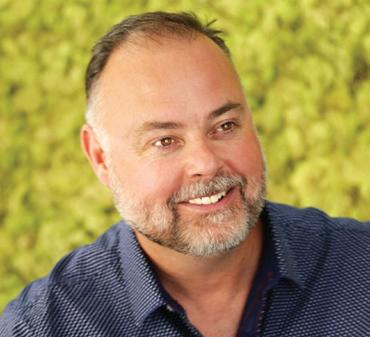 Michael Curran Publisher
Michael Curran Publisher
So many tales of inspiration — it was hard to keep it to just 10
You can never have too much of a good thing, so they say.
I’m not sure that applies to my relationship with ice cream, but it certainly does to OBJ’s Fastest Growing Companies annual feature. It’s always a lot of fun — not to mention educational and inspirational — to learn about the businesses in Ottawa that are growing their revenues at such phenomenal rates.
That’s why this year we’ve expanded our final list to feature the top 20, and not only the top 10. There are just too many awesome applicants and great stories to share.
This year’s fiscal 2021 to fiscal 2023 period has been especially interesting, as we learn how local businesses pushed through the thick of COVID-19 and are now looking to what lies ahead.
For many on this year’s list, the pandemic gave their products or services a huge and immediate boost. For others, it was a time to madly reimagine how they did things and “pivot” the business. Still others are only now beginning to see how COVID actually paved the way for their digital or online offerings, creating acceptance and comfort where maybe none had existed before.
A few aspects stood out for me. For one, it’s great to see a non-profit like Matthew House Ottawa on this year’s list and so interesting to read about that organization’s strategic approach to numerous revenue sources, all of which it was able to juggle to the betterment of our community.
I also appreciated reading about how Zenbooks took on an advocacy role and engaged with the mighty machine at the Canada Revenue Agency — with great results.
Equally, as we exit the pandemic, it’s interesting to learn how Bushbalm (which sat atop our list for at least two years with percentage revenue growth in the four digits) is now trying to find the perfect balance between e-commerce and bricks-and-mortar.
Finally, I have to give a shoutout to KidsCanSwim Canada. I’m not sure I could imagine a more unappealing activity during the pandemic than a bunch of kids sharing a heated indoor pool. How this business managed to not only make it through, but to use the time to improve its operations is certainly worth some kudos.
We’re all still trying to adjust to a new normal. And maybe we won’t see those four-digit revenue growth percentages again. But I doubt many of us will forget the lessons we learned during those horrible few years. And I’m sure that our top 20 — along with many other businesses in Ottawa — will be quick to put that hard-earned knowledge to good use.
 Anne Howland Editor in Chief
Anne Howland Editor in Chief
OBJ.CA SPRING 2024 4
2024 POST-BUDGET BREAKFAST
WEDNESDAY, APRIL 17TH
APRIL 17
With another important federal budget on the horizon, OBJ and OBOT are organizing the 2024 Post-Budget Breakfast. This breakfast is a longstanding tradition in the nation’s capital, where business leaders gather the morning after the federal budget for highlights and analysis. The event will feature Kanata-Carleton MPP Jenna Sudds, who is also Minister of Families, Children and Social Development. Other speakers include Gavin Miranda of MNP, Huw Williams of Impact Public Affairs, and Heather Scoffield of the Business Council of Canada. The breakfast will take place at the Fairmont Chateau Laurier in the Adam Room. Get your tickets at www.ottawabot.ca.
APRIL 23
If you’re interested in the future of Ottawa, especially its downtown core, circle this date on your calendar. The City Building Summit is back and this one promises to be the most important yet. The day-long conference will launch the Downtown Action Plan, an initiative of the Ottawa Board of Trade. Canadian urbanist Mary Rowe will be the morning keynote speaker, outlining the action plan. In the afternoon, Mike Moffatt of the University of Ottawa’s Smart Prosperity Institute will take the stage for an in-depth look at the ongoing housing crisis. For the full City Building Summit agenda, visit www.ottawabot.ca.


MAY 29
The results of the Welch Business Growth Survey 2024 will be unveiled to local business, political and community leaders in late May. This year’s survey will provide a “report card” on municipal leadership and explore topical issues such as downtown revitalization and plans for a possible downtown hockey arena. The breakfast event will take place at the National Arts Centre. Stay tuned for more info at www.ottawabot.ca.

THE DIGITAL INNOVATION LAB
Canada’s collaborative hub for creating accessible digital visitor experiences for your business – and for your audience.
We offer:
• Workshops and webinars
• 3D scanning and rendering
• Digital accessibility audits and testing
• Event venue rental
• And more!
Drive innovation, enhance your brand, and extend your reach.
Ingenium — Canada’s Museums of Science and Innovation
IngeniumCanada.org/lab
Innovation@IngeniumCanada.org
SPRING 2024 OBJ.CA 5

Downtown Gatineau faces greater challenges than Ottawa’s core, officials say
BY MIA JENSEN mia@obj.ca
Since the pandemic, concerns about the “hollowing out of the core” and the departure of federal employees from downtown Ottawa have been top of mind for local officials.
But just across the Ottawa River, business leaders in downtown Gatineau are ringing the exact same alarm bell — perhaps even more loudly.
According to a recent report by the Observatoire du développement de l’Outaouais (ODO), federal employees have left downtown Gatineau in droves in the past five years, as government departments moved to work-from-home and hybrid work models.
In 2021, 14,460 federal workers remained in downtown Gatineau, a drop of nearly 60 per cent from the 36,000 employees who worked in the area in 2016, the report said. And while downtown Ottawa continues
to grapple with the repercussions of a similar exodus, the situation in Gatineau’s downtown is heightened, one official said.
“We have developed the City of Gatineau over the last 50 years around the government occupation of the downtown area,” said Stéphane Bisson, president of the board for the Gatineau Chamber of Commerce. “The situation in Ottawa — it does have other business: law, the lobbying offices, the embassies. You still have some kind of heartbeat. We don’t have that in (Gatineau).”
Bisson described one pre-pandemic decision by the federal government as being particularly impactful. In 2019, employees were removed from the Place du Portage office complex in the Hull sector, while the government undertook a major rehabilitation project on the facility.
“This is a building that, when you come in from Ottawa over the bridge, you see those two big towers that have been stripped totally of their contents,” he said. “Those buildings have been basically empty since 2019.”
and 2025 to adjust the city’s vision to current challenges. He said the last time it was revised was in 2010.
“It’s been a long time; the landscape has changed,” he added.
Bisson’s priorities for Gatineau’s downtown are similar to those cited by business leaders in downtown Ottawa. For him, increasing density is top of mind, in order to address a lack of affordable housing and increase traffic in the area. He also wants to see plans for dealing with vacant buildings, especially empty government offices.
“We need a plan for converting some of these buildings into residential,” he said, something that Ottawa leaders have also been prioritizing.
There are also unique opportunities in downtown Gatineau, he said.
For example, despite some uncertainty, discussions are still underway to build a 600-bed “mega-hospital” campus in the industrial district near the city centre, just west of Lac Leamy.
“That will bring more activities, more people,” said Bisson. “The hospital could drive 6,000 vehicles, but also 20,000 people per day that will go in and out. From visitor, to patient, to worker. That will bring a lot of movement to the downtown area.”
Combined with the government’s current, more permanent post-pandemic hybrid work model, the impact on the area’s business sector has been significant.
“We’re seeing less traffic downtown because the amount of people who work downtown (has gone down),” Bisson said. “And basically, we have a wave of businesses that have decided to shut down. If you don’t have any pedestrians, the businesses who are there are becoming like destination businesses. You need to go there in order to spend money there. That changes the whole picture.”
VISION FOR THE FUTURE NEEDED
In order to address concerns in the area, Bisson said business and government leaders from both sides of the river need to come together to identify joint priorities.
“We are missing a vision for downtown,” he said.
According to Bisson, Gatineau’s urban development plan will be revised in 2024
Bisson would also like to see more engagement from the provincial government, including the Quebec premier, whom he said made an election promise to build a new congress centre downtown, including a hotel.
“That will also make the area more interesting,” he said. “In concert with the (Palais des congrès de Gatineau) and the Shaw Centre in Ottawa, we could attract more people to the Gatineau-Ottawa area.”
According to Sueling Ching, president and CEO of the Ottawa Board of Trade, the similarities between downtown Ottawa and downtown Gatineau present opportunities for collaboration.
“We’ve been working with the Gatineau Chamber of Commerce for a few years because we believe that regional economic development is critically important to the prosperity of the National Capital Region,” she said. “When you say there are a lot of similarities, I would say it’s almost exactly the same situation,” she said. “Ottawa and Gatineau together are disproportionately impacted because of the federal presence. Both have physically built their cores around the public service, and businesses have built to serve that work as well.”
OBJ.CA SPRING 2024 6 CITY BUILDING
Event space in former Chapters on Rideau could make Market a ‘more active district’
BY DAVID SALI david@obj.ca
Aproposed events centre at the former Chapters bookstore on Rideau Street could be a springboard to revitalizing the downtown core and making the neighbourhood a more “active district” for visitors, the head of the new organization that oversees the ByWard Market says.
The National Capital Commission, which now owns the building at 47-57 Rideau St., said recently it is negotiating with a group in the “hospitality and entertainment industry” that wants to lease the 60,000-square-foot space at the gateway to the Market and convert it into an events venue.
While NCC chief executive Tobi Nussbaum offered few specifics about the potential tenant and its proposal because talks are still ongoing, the idea of turning the vacant, two-storey heritage building into some sort of a public gathering space has struck a chord with downtown business advocates.
“From our perspective, I think it’s a strong signal that people are interested and do see value in the future of this district,” Zachary Dayler, the executive director of the ByWard Market District Authority, said.
Dayler, who was hired last year to lead the new organization that replaced the ByWard Market BIA and Ottawa Markets, said the city’s recently adopted Nightlife Economic Action Plan cited the lack of downtown event spaces as a major gap in Ottawa’s infrastructure.
He said such a venue on Rideau Street would “really complement” facilities such as the Shaw Centre and a proposed “destination building” that could eventually replace the multi-level parking garage on Clarence Street under the city’s ByWard Market Public Realm Plan.
“I think it’s really setting the table for pushing the area to being a bit more of an active district,” Dayler said.

I think it’s a strong signal that people are interested and do see value in the future of this district
... I think it’s really setting the table for pushing the area to being a bit more of an active district.
Zachary Dayler, executive director, ByWard Market District Authority
Ottawa Tourism director of public affairs Jerome Miousse agreed a new events space on Rideau Street would give a much-needed economic boost to an area that took a major hit during the pandemic and has yet to fully recover.
“While it’s early in the process, Ottawa Tourism welcomes initiatives to improve and revitalize our downtown core to make it more vibrant for visitors and residents alike,” he said in an email to OBJ.
“Event venues are an integral part of diversifying the ByWard Market’s nighttime offer, which is also in line with this revitalization work and provides economic
impact through our nighttime economy. We will be following developments closely through the National Capital Commission, and look forward to promoting this new space once it is available.”
REKINDLING VISITOR INTEREST
Dayler said the push to revamp the Chapters space is an indication that things might finally be turning around for the ByWard Market, which has fallen on tough times in recent years.
The number of licensed vendors who sell produce and other goods in the area has declined considerably from its heyday.
Meanwhile, many merchants say they are increasingly concerned about safety amid rising crime, including a series of forcedentry robberies that prompted a meeting of business owners, police and City of Ottawa officials late last year.
A municipal corporation with eight employees, the BMDA has a mandate to be an advocate for businesses in the ByWard and Parkdale markets. In addition, the organization is responsible for certain other functions such as issuing patio permits to businesses within its jurisdiction.
Dayler said the group, which will receive $800,000 from the city to help fund its operations in 2024, is working on several plans to rekindle visitor interest in the ByWard Market this summer, including a new partnership with a Toronto organization he declined to name that will provide “pop-up opportunities” for vendors with innovative products.
“I think one of the things that we often overlook about a public market is it’s a great place for the small business community to try out ideas and to explore their concepts,” he said.
The BMDA’s board of directors is expected to approve the organization’s strategic plan later this spring. Dayler said the plan will serve as a blueprint for further initiatives to revitalize the area.
Meanwhile, he said the group’s sevenmember business advisory committee has begun meeting regularly. Chaired by Chateau Lafayette general manager Deek Labelle, the committee, which also includes high-profile business leaders such as Pat Nicastro, owner of La Bottega Nicastro, and Keynote Search CEO James Baker, will serve as a bridge between merchants and the BMDA.
“We’re going to try a lot of things,” Dayler said. “Some things might not work, some might. But we’re in the position to hopefully be taking projects, concepts, ideas and start putting them into place. We’ve been talking about it for a long time. It’s now time to start moving it forward.”
SPRING 2024 OBJ.CA 7 DEVELOPMENT
THE TOP 10 DEALS OF 2023
1
ONE 60 ELGIN, 160 ELGIN ST.
$277 million – downtown class-A office space, sold by H&R REIT to Groupe Mach
2
50 LAURIER AVE., EAST
$96 million – highrise apartment, sold by 50 Laurier Holdings Inc. to Homestead Land Holdings Ltd.
3 OTTAWA MARRIOTT
HOTEL, 100 KENT ST.
$86.5 million – downtown highrise hotel, sold by InnVest Hotels to Manga Hotels
4 66 SLATER ST. AND 130 SLATER ST.
$72 million – downtown class-B office buildings, sold by KingSett Capital to Katasa Group and ARG Devco
5 800 EAGLESON RD.
$61 million – lowrise apartment, sold by Ironclad Developments to CAPREIT Apartments Inc.
6 2660-2710 LANCASTER RD., 2750-2772 LANCASTER RD., 1117-1141 NEWMARKET ST.
$39.75 million – industrial portfolio, sold by Pensionfund Realty Ltd. to Crown Realty Partners.
721 JAMES ST. AND 420 GILMOUR ST.
$37.5 million – lowrise apartment, sold by Minto Multi-Residential Income Partners I GO Inc. to Centre Prime Inc.
8 4570 HAWTHORNE RD.
$36.25 million – residential land, sold by Findlay Creek Development Inc. to Claridge Homes
9 418 HAZELDEAN RD.
$22.953 million –neighbourhood shopping centre, sold by Van Lee G.P. Ltd. to 1000547351 Ontario Ltd.
10 47-57 RIDEAU ST. –
$21.8 MILLION – streetfront retail building, sold by 9053-7341 Quebec Inc. to the National Capital Commission
Total dollar value of deals dropped more than 50% in 2023
BY DAVID SALI david@obj.ca
The total dollar value of commercial real estate transactions in Ottawa plummeted 53 per cent in 2023 compared with the previous year as rising interest rates took their toll on the market, research from Colliers Canada shows.
The national real estate firm reports there were $1.75 billion worth of transactions in the nation’s capital last year, down from $3.75 billion in 2022.
The total number of sales in Ottawa also declined last year, falling to 322 from 465 in 2022 — a drop of 31 per cent.

Commercial sales activity diminished in all asset classes in 2023 as investors navigated rocky economic terrain, Colliers’ Ottawabased vice-president of national investment services, Michael Pyman, told OBJ
“Obviously, with the way the economy’s been going and (with) interest rates kind of paused, the uncertainty in the market clearly has made its way into transaction volumes,” Pyman said. “You’re seeing everything drop off — even the more sought-after asset classes that investors are still saying they’re interested in. Uncertainty kind of kills all deals.”
Last year’s decline reversed a two-year rise in activity that saw total investment volumes jump from $1.9 billion in 2020 to $3.3 billion the following year. Ottawa’s five-year average for total dollar volumes is $2.7 billion.
The top 10 deals last year were worth a combined $931 million, down from $1.46 billion in 2022. The most valuable transaction of 2023 was Groupe Mach’s $277-million acquisition of One60 Elgin from Toronto-based H&R REIT.
“Groupe Mach has certainly been able to make sense of the markets where a lot of people haven’t and is willing to invest in down markets to see the potential upside in the future, especially for marquee assets like 160 (Elgin),” Pyman explained.
MOST NOTABLE DEALS CROSSED CATEGORIES
While the 10 biggest transactions of last year were spread fairly evenly among office, multi-residential, industrial and retail properties, some of the most notable deals crossed categories.
For example, Katasa Group and ARG Devco’s move to acquire a pair of class-B office towers at 66 and 130 Slater St. from KingSett Capital was “more of a multifamily purchase” because the buyers intend to convert the 13-storey highrise at 130 Slater into a residential complex, noted Colliers research analyst Paul Mullin.
In another deal that generated plenty of media buzz, the National Capital Commission paid $21.8 million to buy the home of the former Chapters bookstore on Rideau Street from a Quebec company.
But with the NCC recently confirming it is in advanced talks to lease the 60,000-squarefoot space to an organization that wants to turn it into an events space, the sale was not really a “true retail play,” Pyman said.
“I think (the sale price) probably would have been quite a bit less had it traded for an investor that was looking to repurpose that property for retail,” he added.
Two of the top five deals last year were in the multi-residential class – Kingston-based Homestead Land Holdings’ $96-million
purchase of a 16-storey apartment highrise near the University of Ottawa and Ironclad Developments’ sale of a six-storey, 143unit rental building at 800 Eagleson Rd. to CAPREIT Apartments for $61 million.
In addition, two other residential transactions cracked the top 10. That came as no surprise to Pyman, who said he expects unrelenting demand for rental housing to fuel the local commercial real estate investment market’s recovery in 2024.
“If interest rates don’t go down significantly, at least you’ll have a more stable market,” he said. “I think maybe we’ll see some new (multi-residential) product that was built last year and leased up that will be trading.”
OUTLOOK FOR INDUSTRIAL SECTOR REMAINS STRONG
Only one of the top 10 deals involved an industrial property, but Pyman said the longterm outlook for Ottawa’s industrial sector — especially for buildings with smaller bays and lower ceilings — remains strong.
“Investors like that stuff,” he said. “It’s still really the core of Ottawa’s industrial market, that two- to 10,000-square-foot tenancies. That’s really what drives our market.”
As has traditionally been the case, the Ottawa market continues to be dominated by private investors, who accounted for more than two-thirds of all the money spent on commercial real estate in the city last year.
Institutional investors, meanwhile, accounted for just over two per cent of all spending in 2023, down from about four per cent in 2022. Pyman said he thinks institutional investors that sat on the sidelines as interest rates spiked will become more active in the Ottawa region as 2024 rolls on, “but private capital is still what drives the bus.”
The real estate executive said there is still a “divergence” between what sellers are asking for and what buyers are willing to pay. But Pyman said he’s hopeful that gulf will start to be bridged as the year goes on.
OBJ.CA SPRING 2024 8 REAL ESTATE
BY DAVID SALI david@obj.ca
One of downtown Ottawa’s most iconic retail spaces has a new tenant.
The building at 99 Rideau St. that was home to a McDonald’s restaurant for nearly four decades has been leased to an eatery that will focus on Asian cuisine, real estate brokerage Colliers told OBJ
Kevin Houlahan, a sales representative with Colliers, would not name the building’s new occupant.
He described him as a chef with more than 15 years of experience who is “well-known in the Asian community for his exceptional culinary work in Toronto, Montreal and Ottawa.”
Asian eatery takes over former McDonald’s space on Rideau St. REAL ESTATE Open House Event
The new business is a partnership between the restaurateur and a group from Toronto, Houlahan said, adding the new tenants have signed a 10-year lease at the property.
“The focus will be on fine Chinese/ Asian cuisine with a highlight on dim sum and specialty seafood dishes,” he said.
The property will be renovated to include a sit-down dining room with an entrance on Rideau Street as well as a takeout window. Houlahan said the owners hope to open the new restaurant this summer.
The move marks a new chapter for the 3,917-square-foot space, which McDonald’s occupied from 1985 until May 2023

Step into the future of living with an exclusive invitation to the Clemow’s Open House event on April 26 and 27. Experience the charm of the Clemow, with over 20,000 square feet of amenities.
Join us to see how the Clemow redefines good living for those aged 50 and above, making it not just a place to live, but a place to thrive.
We’ll be serving a selection of appetizers and refreshing beverages. Secure your spot at this landmark event by RSVP at theclemow.com/open
WHEN: APRIL 26 AND 27
TIME: FROM 10 AM TO 4 PM WHERE: 265 CARLING AVE. #101



SPRING 2024 OBJ.CA 9
801-2491 THECLEMOW.COM SCAN TO RSVP FREE OPEN HOUSE PROMOTION RENT FOR 1 MONTH + PARKING FOR 1 YEAR Certain conditions may apply. Valid until May 31, 2024. Y OF SUBSIDIAR
weird ones. Mann
Full
Law Firm
OTTAWA, ON K1S 2E1 613
The Mann Lawyers Business Law team keeps you informed about important legal requirements in business law in Ontario, even the
Lawyers |
Service
AGAINST THE LAW TO MAKE A PURCHASE WITH MORE THAN $5 WORTH OF NICKELS.
613-722-1500 mannlawyers.com IT’S
How Valamode’s Dia Capello found success through sacrifice UP CLOSE
BY CAROLINE PHILLIPS caroline@obj.ca
Ten years ago, Dia Capello saw a business opportunity in Ottawa’s luxury consignment retail sector, specifically within the niche market of pre-owned designer purses and accessories.
Instead of backing away due to fear of failure or lack of confidence, she took the bold step of launching her own online business, Valamode. Turns out, she was ahead of the curve, embracing e-commerce shopping and sustainable fashion before they became trendy. Today, the 37-year-old entrepreneur boasts seven-figure annual sales, operates globally and continues to add members to her team.
Who knew high-end handbags could be such a serious business? Well, Capello did.
She saw potential in purses after coming across an article asserting certain top-tier bags were a better investment than gold. “It made me dig a little further and I realized that very particular brands will sustain incredible value and actually go up, which is wild.”
Not long after Valamode made its debut, the business received a publicity boost through a newspaper article that ran in publications across Canada. This was followed by a successful pop-up collaboration with Bayshore Shopping Centre in September 2015, at a time when flash retailing was still new.
By 2017, Capello was a full-time entrepreneur. She left her position as a human resource specialist at Innovapost and set her sights on opening a physical location, driven by her belief Ottawa was missing a luxury retail space.
Capello found a temporary spot in Westboro, with help from local real estate entrepreneur Derek Noble, before relocating to nearby Wellington West. It’s where she now operates “the best curated closet in the city.”
“Honestly, sometimes I can’t believe I’ve made it 10 years,” said Capello during

a recent interview at her by-appointment showroom. The space is every bit as lovely and charming as the owner. “I’m lucky because Ottawa really does support its community, and there’s something to be said about having great relationships across the city with other like-minded business owners who want to see you succeed.”
An example of this support unfolded when she popped over to the Italian food store Il Negozio Nicastro to buy a couple of lattés for the interview. The shop not only wished her good luck, but also gave its endorsement by generously giving her the specialty coffees.
It’s easy to cheer for Capello. Her story is one of courage, adaptation, risk-taking, community and, above all, hard work and sacrifice.
certain things in life I had to get them myself. That way, I could pay for extracurricular activities and be able to buy books and clothes and those types of things.”
The high school student juggled multiple jobs and saved her money with the goal of moving her family out of social housing. One of her jobs as a teenager was to sell handbags at Holt Renfrew.
“I dreamed of a home; I dreamed of a home,” recalled Capello.
Her resourceful mother also held down various jobs, including working as a banquet server at The Westin hotel. The GM at the time was John Jarvis, whose wife, now-retired business executive Françoise Gagnon, would later become Capello’s client and mentor.
At age 17, Capello purchased her first property near Riverside and Walkley, cosigning the Scotiabank loan with her mother. The house marked a strategic turning point. “That was the smartest decision I ever made,” said Capello, who would later reinvest the profits from resale to grow her wealth.
Now, Capello is particularly proud to be supporting sustainable fashion. “Consignment, generally speaking, is a very healthy way to give back to the universe. If you have an item in your closet that you’re not using, finding the right store to sell it allows you to use the funds for something else, all while the item finds a new, loving home.”
Her journey began in 1990 when she arrived in Canada at the age of three as a refugee, accompanied by her older brother and their mother, Nahid Assar. “She’s my hero,” said Capello of her mom, who fled her homeland with only her kids and three suitcases. “She really wanted to give her children the freedom of choice.”
Establishing a new life in Canada wasn’t easy. The family had to learn a new language and adjust to a different culture while facing financial constraints.
“We were told, ‘Work hard and anything is possible,’” said Capello, who, at the age of 12, fibbed about her age to get her first job, working at a restaurant. With her first paycheque, she bought a countertop toaster for the household.
“Growing up, I knew that if I wanted
Among the prestigious brands that she carries are Louis Vuitton, Chanel and Hermès. Her showroom has a vintage Chanel bag priced at $7,000. The owner paid $1,500 when she purchased it 30 years ago. It was a smart purchase, indeed, said Capello.
The entrepreneur has built wonderful relationships with her illustrious clientele. “I definitely have access to some incredible closets,” said Capello, who travels to Toronto, Vancouver, Calgary and Montreal to meet with clients and acquire their luxury items.
Valamode also facilitated the fateful meeting between Capello and her future husband. A client’s daughter, upon learning Capello was inexplicably single, knew of the perfect match.
Her blind date with Anthony Capello in 2018 turned into marriage two years later.
“I feel so lucky to have met him through my work,” said Capello, who considers her husband a business role model.
OBJ.CA SPRING 2024 10
Dia Capello, owner of Valamode. PHOTO BY CAROLINE PHILLIPS
Little Victories Coffee opens second ‘destination-driven’ location downtown
BY SARAH MACFARLANE sarah@obj.ca
At a time when many businesses in the downtown core are struggling with reduced foot traffic, Little Victories Coffee is opening a new central location, based on its unique offering in the market.
Co-founder Andrew Basset says, at any given time, his cafes are bustling, thanks in large part to Little Victories’ “destinationdriven” goal.
“Businesses that used to succeed just on traffic are struggling,” Bassett explained. “You have to make it an attractive space. People will always show up for quality and experience.”
The Little Victories cafes don’t have free Wi-Fi but instead encourage visitors to meet
friends and chat rather than sit staring at their laptops, a move that Bassett said is largely inspired by internet-free cafes in Europe.
This boosts table turnover because customers aren’t “camped out” at tables working for hours on end.
“You have to be creative about the business model and create a place to go be social,” said co-founder Jeremie Thompson. “Look around: everyone is chatting, no laptops. It kills people’s experience.
“If you want Wi-Fi, go to McDonald’s.”
The approach seems to be paying off, so much so that Little Victories is opening a new cafe at 223 Bank St. at the corner of Queen Street, three blocks away from its 44 Elgin St. location.
“(Elgin) is getting tapped out,” said Thompson.

The new cafe represents a full-circle moment for Bassett and Thompson; they had originally pursued the Bank Street space as their first storefront. Bassett said he and Thompson were negotiating to buy the lease from the cafe that had been renting the spot , but the landlord was not willing to proceed.
“We were still new, and I guess he didn’t think it was viable,” said Bassett.
Little Victories was born in 2015, the product of “a partnership as friends who love coffee,” and the first cafe opened in the Glebe on 801 Bank St. soon after. Bassett and Thompson also operated a pop-up shop in Hintonburg during the pandemic that served customers with an outdoor takeaway window, rather than an indoor service would require barriers and distancing.
“It felt very unique and allowed people to
actually come and visit us,” explained Bassett. “And it brought all this love and exposure to us that was fun in a time that felt really bleak.”
During the pandemic, Thompson said they were forced to “reinvent the company every week.”
There wasn’t much of a choice — “we had no exit strategy,” said Bassett. “All or nothing.”
Little Victories already had an online store pre-pandemic, and the co-founders say the city showed up to support the local business. As a result, they opened the Elgin Street cafe in 2021.
And despite the new cafe’s proximity to the Elgin location, he’s confident the foot traffic at the Bank and Queen intersection will sustain business. Besides, he added, “People don’t like to walk too far for coffee in Ottawa.”
SPRING 2024 OBJ.CA 11
Small Business Offer Cashflow low? Get funding for energy-saving upgrades. — Small businesses can get incentives on energy efficiency upgrades that deliver ongoing savings. There are no high upfront costs—incentives go directly to the Program Delivery Agent so you pay only the reduced price. Incentives cover up100% to of total costs for improvements* * Terms and conditions apply. Visit enbridgegas.com/installdckv and enbridgegas.com/shippingdoors for program details. ™ Save on Energy is a trademark of the Independent Electricity System Operator (IESO). Used under license. © 2024 Enbridge Gas Inc. All rights reserved. ENB 2048 03/2024 Email energyservices@enbridge.com for program details and to confirm that you qualify. Demand control kitchen ventilation Get up to $24,500 in joint incentives from Enbridge Gas and Save on Energy. Limited-time offer 0 – 5,000 CFM exhaust $10,000 Up to 90% Up to 100% maximum per unit of total installed costs of total installed costs Air curtains Dock door seals Restaurants Warehouses Shipping door equipment JOB NO. / CLIENT / PROGRAM DATE PUBLICATION (VENDOR) / INSERT. DATE FILE NAME: ENB2048_SmallBusinessOffer_OttawaBusiness_9-67x5_ID09 RESTAURANTS

OBJ.CA SPRING 2024 12
BRIGHT SIDE OF (DOWNTOWN) BUSINESS

The Bright Side of (Downtown) Business is an editorial feature focused on sharing positive stories of business success. The column is presented by Star Motors, Ottawa’s original Mercedes-Benz, Mercedes-AMG and Mercedes Van dealer.
Mamma Teresa has done its best for customers for more than 50 years
BY ZENITH WOLFE news@obj.ca
There are likely few downtown workers who haven’t, at some point, made the trek to Mamma Teresa, a staple in Ottawa’s downtown core. In fact, when it comes to authentic Italian cuisine in the capital, while many might think of restaurants in Little Italy, many more might recommend Mamma Teresa.
The familiar red-brick restaurant at the corner of Somerset Street West and O’Connor Street was founded by Giuliano Boselli and his mother, “Mamma Teresa,” in 1970. Originally from the Italian city of Parma, they promoted their new restaurant’s food as authentic northern Italian cuisine and fostered an atmosphere of hospitality similar to that of their hometown.
Walter Moreschi was one of two longtime employees who took over the restaurant in 2008. Moreschi says while he began as a busboy in 1983, Boselli quickly promoted him to waiting tables, despite the fact he did not speak any French.
“On the third night (as a waiter), I grabbed a fork and asked the customer, ‘How do you

say this in French?’ I maybe asked that a thousand times that night and I learned how to say it. The next night was another item,” Moreschi recalls. “Because we had repeat customers, they started asking me, ‘Walter, what do you want to know?’”
Moreschi had his first experience managing the operation in his sixth year, when Boselli went on his annual vacation to Florida.

surprise of their customers.
“People thought I already owned the restaurant,” Moreschi laughs. “So it was a smooth transition for me and for them.”
Moreschi says the connections with customers, who have included politicians and celebrities, have always been crucial to Mamma Teresa’s success. He’s seen locals come on first dates and return as married couples with children, only for that second generation to return with partners of their own.
To maintain this environment, he encourages staff to greet customers they know, even if they aren’t waiting at those customers’ tables.
The restaurant also sources much of its produce from Italy, including certain cheeses and mushrooms, for a true Italian experience.
The Ottawa location can seat 200 people and often has a full house, according to Moreschi. He says head chef Joel Estebrooks is another reason the restaurant has flourished.
“He’s really a master chef. What he’s taught all of us is another level of cooking,” he says. “On New Year’s Eve, we give him carte blanche. The customers, every year they say, ‘Can you put this on the menu?’ but they’re not aware it takes us from morning to night to prepare the dishes.”
DRIVEN BY DESIRE
“He was old school. He wouldn’t tell me, ‘Check this, check that,’ he just said look after everything, so it was trial and error,” Moreschi says. “I looked after the restaurant like it was my own.”
Though he says he lost sleep over the experience, he gained a love for the restaurant. When he and longtime coworker Frank Schimizzi took over the business in 2008, he says it was much to the
The continued success of the business encouraged the co-owners to open a second location in Chelsea, Que. in 2016. When the pandemic hit, they pivoted to takeout, which saw them working 16-hour days to make up for staffing shortages.
As the restaurant enters its 54th year and regains some stability post-pandemic, Moreschi says he’s reassured by the continued support of his customers.
“I cannot do something better because we’re doing our best now,” he says. “We have to keep that standard.”

SPRING 2024 OBJ.CA 13
Star Motors of Ottawa 400 W. Hunt Club 613.737.7827 starmotors.ca The savings you desire. Now at Star Motors. Right now, enjoy extra special savings offers on our best selling Mercedes-Benz vehicles including the GLC SUV, C-Class sedan, and GLE SUV.* Visit us and shop our excellent selection now. SEE THE OFFERS
Co-owner Walter Moreschi. PHOTO BY ZENITH WOLFE
SPRING SALES EVENT
*Terms and conditions apply. Complete details at starmotors.ca/offers.



HELPING SUCCESSFUL COMPANIES TURN GROWTH INTO VALUE.
We can help you with:
• Financial projections for lenders
• Identifying and tracking the KPIs to keep your growth profitable
• Evaluating acquisition targets
• Creating your cashflow, forecasting and budgeting models
• Structuring your in-house accounting & finance operations
• Tax structures and compensation strategies for owners and family members
GGFL IS PROUD TO PRESENT
2024 FASTEST GROWING COMPANIES
Here are the top 20 for 2024
THIS YEAR’S COMPANIES HAVE AT LEAST DOUBLED THEIR REVENUES
1 Trellis Corporation
GROWTH RATE: 962.5%
AGE OF COMPANY: 1-4 YEARS
# OF EMPLOYEES: 20-49
Trellis is an AI-powered demand generation SaaS platform that delivers profitable growth for brands selling on e-commerce marketplaces.
How did you grow your company’s revenue during the global pandemic?
Our company was established six months before the onset of the pandemic. Throughout the pandemic, we experienced growth in revenue by employing an outbound sales approach. The sales team effectively utilized a blend of outreach methods, including email campaigns, cold calling and LinkedIn outreach.
What was your biggest challenge during that time?
Trellis was a newcomer in the industry during the global pandemic, during which time attending trade shows or in-person

events was not possible. This limited opportunities to increase our brand visibility and made it challenging to introduce Trellis to clients.
What is your biggest opportunity post-pandemic?
With a vast market comprising over three million sellers and 300,000 brands within our target segment, a tremendous opportunity lies ahead. As travel restrictions have eased, we can now actively engage with clients by attending trade shows, participating in events, or visiting their offices. Despite the expansive market, our current market penetration is below 0.1 per cent, indicating substantial growth potential. To capitalize on these opportunities, it is imperative to persist in innovation, stay ahead of the competition, and effectively execute our go-to-market strategy.
2 ZeroTek Inc.
GROWTH RATE: 780%
AGE OF COMPANY: 5-9 YEARS
# OF EMPLOYEES: 10-19
ZeroTek develops identity access management software that helps IT managed services providers (MSPs) to secure their small business customers from hackers using stolen identities.
How did you grow your company’s revenue during the global pandemic? The pandemic meant that, for a business to survive, it would need to have employees working from home. This meant they had to leave the security and protection of the office network to face the risks of insecure and vulnerable home technologies. ZeroTek provides identity access management software that verifies all employees’ identities and provides personal secure access to the applications they need to do their jobs.

ZeroTek worked for three years on its identity access management solution before signing a critical partner relationship agreement on Jan. 31, 2020. COVID was declared a global pandemic in March 2021, just two months after we opened for business.
What was your biggest challenge during that time?
Our biggest challenge was finding enthusiastic customers and innovative employees to create great solutions. We were determined to operate a permanent work-from-home organization. In founding ZeroTek, the first employee and only equity co-founder was Neil Arsenault, a long-term employee in Level Platforms, where I (Peter Sandiford) had been founder and CEO from 2003 to 2013. We faced many challenges. I was so happy to see our ability to work together, conceiving and implementing solutions with ease. Our executive team was part of what could have been a challenge but was just what it should be, a lot of fun.
What is your biggest opportunity post-pandemic?
Now, four years later, we are an established business growing as quickly as we can while making sure we are making ZeroTek a highquality business for employees and partners. All our employees work from home across Canada.
SPRING 2024 OBJ.CA 15
PRESENTED BY
1 2
Krishna V and Fahim Sheikh
Peter Sandiford
2024 FASTEST GROWING COMPANIES
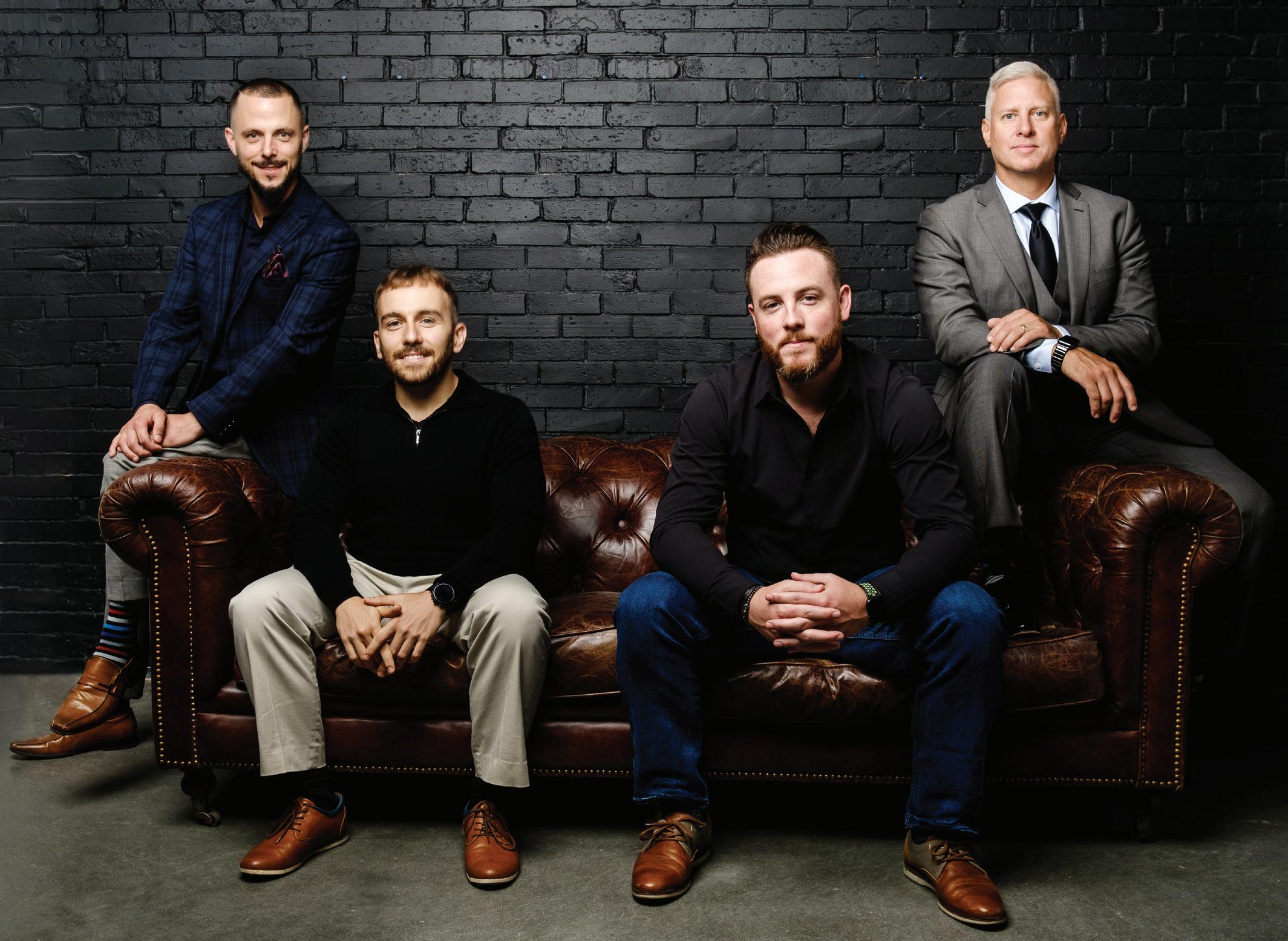
3 TryCycle Data Systems
GROWTH RATE: 757.5%
AGE OF COMPANY: 5-9 YEARS
# OF EMPLOYEES: 20-49
TryCycle is a digital mental health software company.
How did you grow your company’s revenue during the global pandemic?
We needed to be flexible beyond our existing product lines and markets. We had existing relationships with some First Nation communities prior to the pandemic and the pandemic had an extremely negative effect on those populations. We were able to come up with a creative solution called Talking Stick to help address some of the issues.

By listening to the unique needs of our customers and potential customers, we were able to develop new enterprise solutions in a space that was adjacent to the current products we had deployed.
What was your biggest challenge during that time?
Being a startup with all the unknowns, viability of the business was a concern.
Customers had questions about their future and that, in turn, made it difficult for them to commit to a new technology in their organization. Those challenges decreased as organizations navigated their way through the pandemic with a little more clarity.
What is your biggest opportunity post-pandemic?
GROWTH RATE: 595%
AGE OF COMPANY: 1-4 YEARS
# OF EMPLOYEES: 20-49
At Autocorp, a fusion of industry expertise and technology empowers both consumers and dealerships with a suite of digital retailing products centred around credit and financial services.
How did you grow your company’s revenue during the global pandemic?
The growth in our company’s revenue was a testament to the unwavering grit and determination that fuelled us. Our strategy involved making thousands of cold calls. Moreover, our commitment to innovation within the automotive space played a pivotal role. This multi-faceted approach, characterized by perseverance and a forward-thinking mindset, was instrumental in driving our revenue growth.
What was your biggest challenge during that time?
The biggest challenge was twofold: internally, learning new processes and systems to operate effectively as a remote team; and externally, connecting with dealers who were uncertain about the future. The shift to remote work necessitated a rapid adaptation to new technologies and methods of collaboration. Simultaneously, we encountered the hurdle of convincing dealers of the value our products could bring in navigating the crisis. Our task was not only to demonstrate how our offerings were suited to the moment, but also to build trust in a time of apprehension.
What is your biggest opportunity post-pandemic?
Our biggest opportunity lies in leveraging the accelerated digital transformation and the heightened acceptance of remote operations by both businesses and consumers. The pandemic has fundamentally altered the landscape of the automotive industry, creating a more receptive environment for innovative, technology-driven solutions. This shift provides us with a unique chance to 4 3
The biggest opportunity is a result of the enterprise solutions that we created during the pandemic for First Nation communities. Customer acceptance in one jurisdiction translates into acceptance in other jurisdictions, in Canada and internationally. We believe that we have an opportunity in the next few years to be the largest Indigenous employer in Canada!
OBJ.CA SPRING 2024 16
PRESENTED BY
4
Autocorp.ai
From left, Jason Groulx, Collin Glass, Andrew Lemoine, Kole Hicks
John MacBeth
2024 FASTEST GROWING COMPANIES
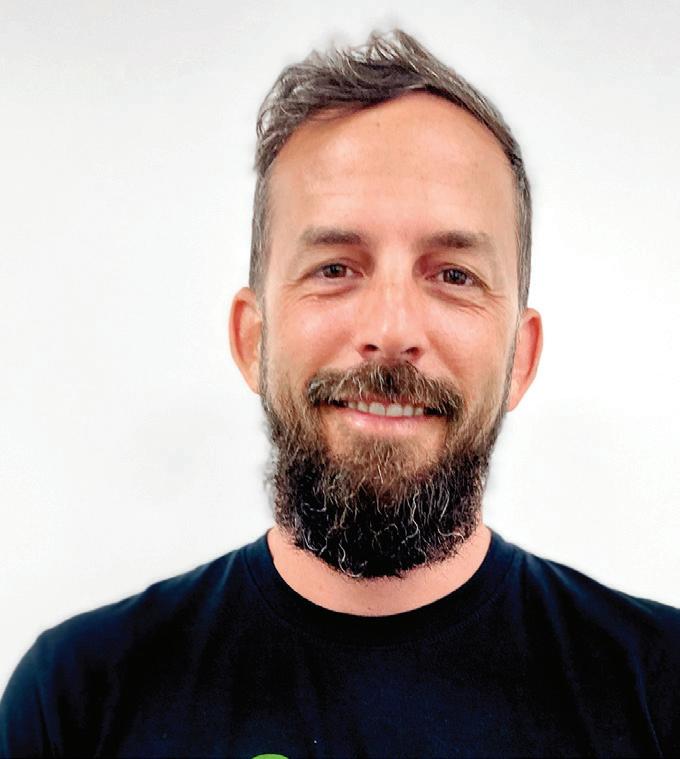
expand our digital offerings, enhancing our products to meet the evolved needs of our clients and end-users.
5 Kahi.io
GROWTH RATE: 532.4%
AGE OF COMPANY: 1-4 YEARS
# OF EMPLOYEES: 10-19
Kahi helps the disaster restoration industry manage and track assets, vehicles and people using IoT technology.
How did you grow your company’s revenue during the global pandemic? We worked aggressively to promote our newly launched asset tracking platform via social media (in particular Facebook). Our CEO Kevin Dooley was already a highly regarded thought leader in the disaster restoration space and his organic posts about our product yielded a lot of direct inquiries for demos and subsequent sales.
What was your biggest challenge during that time?
Without the benefit of trade shows as a venue for product discovery, we had to rely on online tools to meet and build trust with early adopters. This particular industry relies a lot on face-to-face relationship-building and subsequent referrals when introducing a new way of doing things.
What is your biggest opportunity post-pandemic?
We are ready to launch our second major product, which consists of a hardware sensor to measure temperature and humidity. The device works in tandem with a newly launched mobile application to collect data and will soon be further augmented with a remote monitoring gateway that precludes a technician visit. The number of existing and new customers waiting for this product is overwhelming, in the best possible way.
6 KidsCanSwim Canada
GROWTH RATE: 456.8%
AGE OF COMPANY: 1-4 YEARS
# OF EMPLOYEES: 50-99
KidsCanSwim Canada are privately run swim schools delivering learn-to-swim lessons to babies/kids in purpose-built facilities containing shallow pools, warm water and a proprietary and science-based curriculum.
How did you grow your company’s revenue during the global pandemic? Needless to say we had challenges, given that we had to close eight times in the first two years of operation. However, every time we re-opened, our numbers doubled and we were so lucky that our community supported us and believed in our products and services.

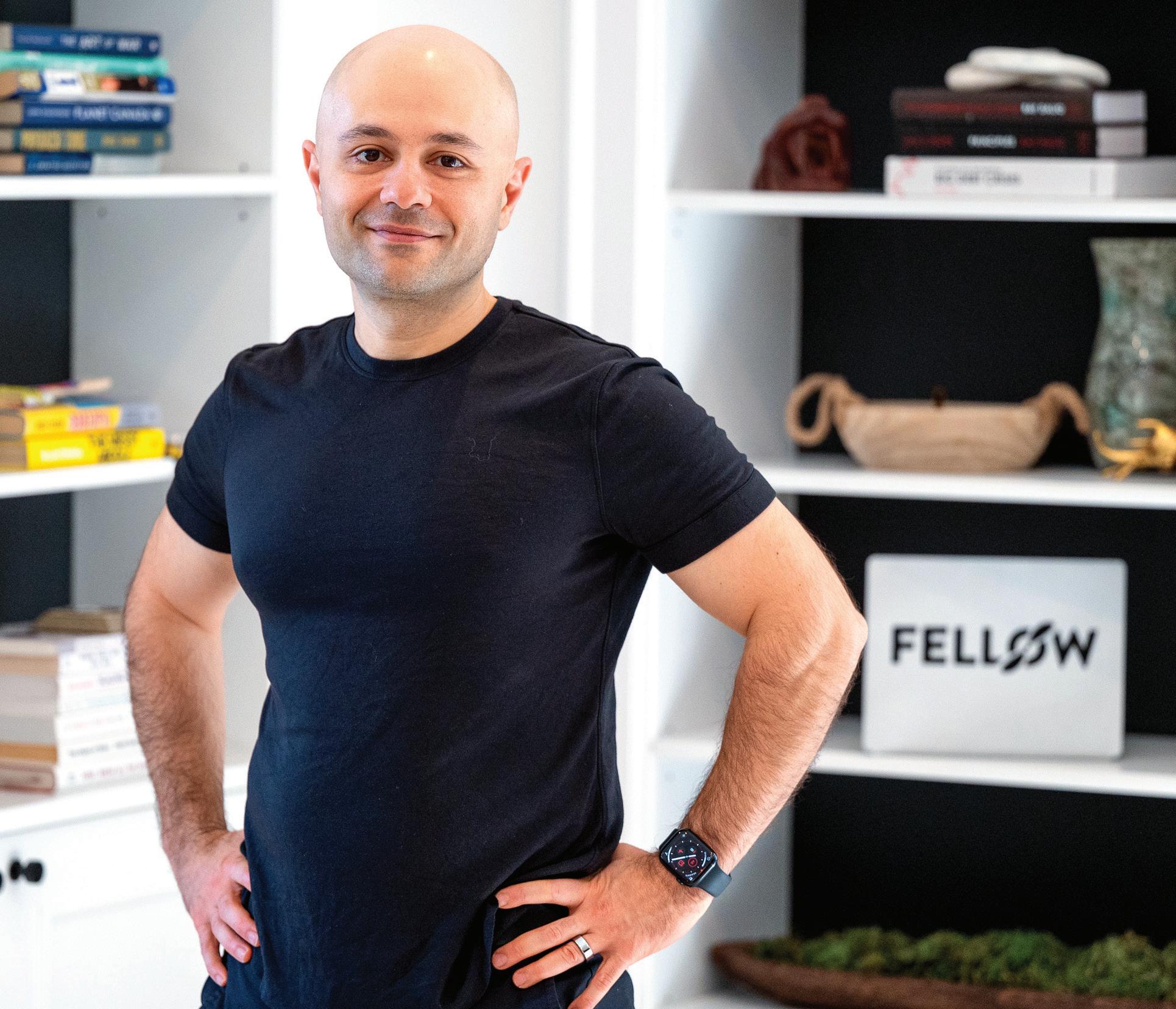
What was your biggest challenge during that time?
We opened our doors six weeks before the COVID shutdown. We needed to ensure that we were keeping our momentum while building/training our team members with our new offerings, while also keeping guests informed and engaged in supporting our new business. Very early on we made the decision to keep all of our full-time employees and used that time to create a robust system/operating procedures for when we were able to re-open. With the help of our awesome team, we turned that challenge into a positive situation.
What is your biggest opportunity post-pandemic?
Given the pandemic, several families didn’t have the chance to get learn-to-swim lessons and there is a backload of kids looking for our services. Moreover, we realized that the number of available swim lessons currently offered in Ottawa is less than the actual demand. We are now fully operational in Kanata, building in Orleans and negotiating in a few other spots in Ottawa. We truly feel that we are poised for more growth in the next few years.
7 Fellow
GROWTH RATE: 298.9%
AGE OF COMPANY: 5-9 YEARS
# OF EMPLOYEES: 50-99
Fellow is an all-in-one AI meeting management software that allows fewer, more effective meetings with an integrated AI meeting assistant.
How did you grow your company’s revenue during the global pandemic?
By being very customer-centric and truly understanding what customers’ new and existing challenges were when it came to meeting productivity. Being so customercentric allowed us to build a product that was easy to adopt, had virality within organizations, and quickly became part of a productive, efficient workflow.
What was your biggest challenge during that time?
Ensuring our staff was safe and healthy and focusing on maintaining the culture we had built while we were in-person. Leveraging our own product to help us overcome
SPRING 2024 OBJ.CA 17
PRESENTED BY
7
Aydin Mirzaee
6
Hugues Boisvert
5
Kevin Dooley
2024 FASTEST GROWING COMPANIES

the challenges during this time was very helpful. On the business side, we had to adapt to how companies were purchasing software amid their evolving needs and challenges. Everything was moving so fast and the uncertainty made it essential that we understood our customers and their needs.
What is your biggest opportunity post-pandemic?
Remote and hybrid work styles create a new set of problems that companies have to overcome. More time is spent in virtual meetings since casual in-person conversations are less frequent. Since Fellow integrates into video conferencing software and most productivity tools, it fits seamlessly into new workflows that come with remote and hybrid work.
8 Zenbooks
GROWTH RATE: 254.75%
AGE OF COMPANY: 5-9 YEARS
# OF EMPLOYEES: 10-19
Zenbooks is a full service online accounting experience offered by a team of advisers, accountants and payroll professionals that provides insight to businesses and key decision-makers.
How did you grow your company’s revenue during the global pandemic? We focused on getting elite accountants from across the country who don’t just have a bunch of designations, but are well-rounded professionals who can have valuable conversations with modern business owners about a variety of topics. Our small team of six grew quickly to 15! We have a phenomenal work culture and we’re a beacon for accountants who want to work from home permanently. We then focused internally on how to deliver the best experience for the modern business owner, which included advocating for important topics.
In March 2020, we wrote to the Canada Revenue Agency advocating to allow electronic signatures (which was adopted). Then we delivered free personal tax returns for front-line workers through
our Accounting for Bravery program and developed guides to pandemic government assistance for business owners.
What was your biggest challenge during that time?
Our work-life balance suffered. We wanted a good work-life balance for our team, but we didn’t do that for ourselves. The everchanging rules and constant calls from struggling business owners on the verge of collapse was exhausting.
During that period of growth, we handled an enormous number of interviews to fill positions. We aggressively pursued key management hires before we grew. We knew we could get thousands of people to apply for our remote jobs and we made our recruits jump through interviews, work samples, personality tests, etc., to make sure they were the perfect fit.
What is your biggest opportunity post-pandemic?
We’ve got a significant opportunity to serve more businesses across Canada. There are about 1.2 million businesses in Canada. We help about 0.03 per cent of them right now. We clearly are providing a fresh new experience that resonates with modern business because we keep getting referrals! We think there’s an opportunity in assisting Canadian business owners with their U.S. compliance needs. There’s also significantly more advocacy work we want to tackle. We advocated to extend the personal tax deadline in 2023 given the PSAC strike and we continue to assist 2SLGBTQI+ business issues.
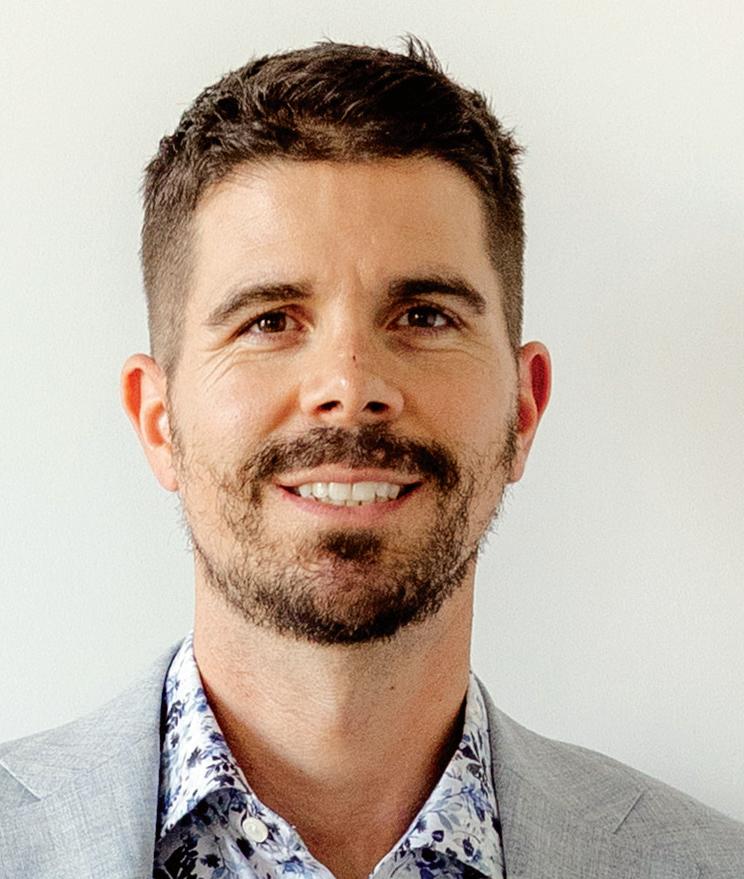
9 MPN Capital Markets Ltd.
GROWTH RATE: 244.6%
AGE OF COMPANY: 5-9 YEARS
# OF EMPLOYEES: 10-19
MPN Capital Markets is an energy brokerage firm specializing in expert energy procurement and management solutions tailored for Canadian commercial and industrial end users.
How did you grow your company’s revenue during the global pandemic?
Recognizing the power of technology, we made substantial investments to enhance our customer outreach through direct marketing strategies, leveraging digital platforms to connect with our audience more effectively. Additionally, to diversify our services and provide added value to our existing clientele, we launched an electricity procurement division. This not only addressed the evolving needs of our current customers but also positioned us to tap into new markets.
What was your biggest challenge during that time?
Connecting with decision-makers became a significant hurdle, as traditional channels of communication were disrupted and the shift to remote work environments led to our contacts having limited access to their essential materials, complicating the management of renewals. This situation was further compounded by the difficulties our sales force faced in engaging with new prospects, requiring us to keep them motivated and driven. However, the most daunting of these challenges was retaining good talent, as the uncertainty and stress of adapting to a new normal took a toll on mental health, underscoring the need for supportive and flexible workplace policies.
What is your biggest opportunity post-pandemic?
While our initial vision involved establishing physical sales offices in every province and state, the pandemic forced us to embrace a virtual approach. This not only allowed us
OBJ.CA SPRING 2024 18
PRESENTED BY
9 8
Eric Saumure and Colin Robinson
Dan Quirouette
2024 FASTEST GROWING COMPANIES
to scale our operations efficiently without the need for in-person meetings, but also contributed to a substantial reduction in operational costs, particularly those associated with travel. Consequently, we’ve been able to offer a more competitive pricing structure to our clients. Moreover, the virtual model enables us to operate from a centralized office in Ottawa, officially designating it as our headquarters. This approach positions us to capitalize on a national scale.
10 Craft& Crew Corp.
GROWTH RATE: 196.2%
AGE OF COMPANY: 10-14 YEARS
# OF EMPLOYEES: 20-49
Craft&Crew Corp. is a Canadian marketing network that offers creative, media planning and buying, website design, technology development, and video production services.
How did you grow your company’s revenue during the global pandemic?
As a company that already had the systems and processes to support a workforce distributed across Canada, the day we shut down our office we were immediately back up and running without any disruptions. Where many of our peers and competitors spent their time stressing about “how” to work, we focused on the benefits and opportunities the pandemic provided. The three largest opportunities were (1) our network of marketing agency peers tightening their service offerings, allowing us to create referral partnerships with them versus viewing each other as competitors (2) the sheer volume of new business meetings we could book in a remote-first world versus pre-pandemic and (3) we stressed the need to focus on our core values during a time of crisis, which truly did allow us to thrive.
What was your biggest challenge during that time?
As a company with no external funding, I cannot stress how incredibly difficult it is to manage cash flow effectively during these growth phases. We went from a business with 12-plus months of cash runway at the start of our 2020 fiscal year, to one with, at many times over the last two years, three to four weeks max. Related to this, in the past three years we had to invest heavily in operational infrastructure to support growth, which reduced our margins. As a leader, I have spent more time in CFO-mode these past two years than I have in CEO-mode.
What is your biggest opportunity post-pandemic?
The growth we have experienced in the past few years has been accomplished while the company has largely worked in silos. Between our divisions (creative, media, web, advanced technology, and video), we have identified that there is only about 20 per cent overlap between clients, meaning there is significant opportunity to cross-sell.

11 Better Retirement Living
GROWTH RATE: 187.2%
AGE OF COMPANY: 1-4 YEARS
# OF EMPLOYEES: 5-9

Better Retirement Living provides professional services as a turn-key manager and operator for retirements throughout Canada.
What is your biggest opportunity post-pandemic?
Better Retirement Living sees a prime opportunity to innovate while reinforcing the essence of community and personal connection. Our response to staffing challenges and increased operational costs has prepared us to further invest in our workforce, offering competitive benefits and a supportive environment that ensures high-quality care.
Simultaneously, we’re embracing technology to enhance health monitoring and communication, while deeply understanding the irreplaceable value of face-to-face interactions. Our approach balances digital advancements with encouraging personal connections among residents, their families and friends, ensuring our communities remain vibrant and socially integrated.
A standout initiative is our unique student housing program within one


client’s community, where up to four students live among residents. This fosters intergenerational connections through shared meals, recreational activities and daily interactions, enriching the lives of residents and students alike.
12 Sidi.io
GROWTH RATE: 184%
AGE OF COMPANY: 5-9 YEARS
# OF EMPLOYEES: 10-19
Sidi.io solves revenue challenges by leveraging performance marketing to generate opportunities for clients.
What is your biggest opportunity post-pandemic?
SPRING 2024 OBJ.CA 19
PRESENTED BY
10
Dave Hale
11
Kyle Simourd
11
Kyle Soutar
12
Riaz Sidi
2024 FASTEST GROWING COMPANIES

The honour of being named to OBJ’s Fastest Growing Companies for a third consecutive year comes with an important responsibility — to remain humble and relevant. With a strong foundation and team in place, our biggest opportunity is to scale up the impact we can have on our clients and community. With clients across North America and countless engagements beyond our core services, including cutting-edge website development and a rapidly growing partnership with HubSpot, we are primed to help our clients in new and exciting ways. We are doubling down on being a highvalue premium service and becoming an extension of our client’s internal marketing team. It is important for us to be a strong community partner that gives back to the Ottawa business community that has supported us in such a profound manner.
13 Matthew House Ottawa
GROWTH RATE: 177.1%
AGE OF COMPANY: 10-14 YEARS
# OF EMPLOYEES: 20-49
Matthew House Ottawa is a charitable organization that helps Ottawa’s marginalized populations to establish connected, safe, healthy and dignified homes within our community.
How did you grow your company’s revenue during the global pandemic?

The advantage of running a charity is that there are many different streams that can be tapped into to grow revenue. At Matthew House Ottawa we have increased revenue via a dozen mostly independent streams including social enterprise, rental income from our transitional housing program, donations, grants, consulting and government funding. In the year plus before the pandemic, we had been building the foundations for growing our revenue from these various streams, so we were well positioned when the pandemic hit. When some revenue streams disappeared literally overnight, we could invest in others to make up for it.
What is your biggest opportunity post-pandemic?
Our biggest opportunity is to expand our refugee services program until we can divert every refugee claimant who arrives in Ottawa from homelessness. We have the required

revenue during the global pandemic?
During the onset of the global pandemic, Genesislink was in its early stages, having been founded just a month prior. Faced with unprecedented challenges that were not anticipated in our initial planning, we swiftly pivoted our strategies to adapt to the rapidly changing market conditions. Our approach was multifaceted, focusing on innovation, customer service and leveraging technology.
What is your biggest opportunity post-pandemic?
expertise, an effective model that is scalable, a supportive partner ecosystem, and a municipality that is willing to work with us.
14 Genesislink Consulting Services
GROWTH RATE: 153.16%
AGE OF COMPANY: 1-4 YEARS
# OF EMPLOYEES: 5-9
Genesislink specializes in enabling foreign entrepreneurs to establish and grow their businesses in Canada through consultancy and engineering services.
How did you grow your company’s
Genesislink’s prime opportunity lies in the shift toward virtual service transactions and the increased consumer trust in online business dealings, especially within the B2C sector.
15 Member Lounge
GROWTH RATE: 138.78%
AGE OF COMPANY: 10-14 YEARS
# OF EMPLOYEES: 10-19
Member Lounge builds membership websites for associations.
What was your biggest challenge during the pandemic years?
Our biggest challenge was changing the way we worked. We used to serve different types of clients across different industries, and then we decided to focus only on associations. This meant we had
OBJ.CA SPRING 2024 20
PRESENTED BY
15 14 13
Allan Reesor-McDowell
Mary Yazdani
Farhad Khan
2024 FASTEST GROWING COMPANIES
to reorganize our team and update our technology. Everyone on the team had to learn new things.
This period of transformation was particularly demanding as we were completely self-funded. The clients also became more cautious in their spending.
Despite these challenges, we stayed true to our goals. We only spent our resources on things that were really important for us and our clients. This meant cutting out things that didn’t add value. In the end, this laser focus strengthened our service offering and pushed us to a leadership position in member engagement within the association space.
16 Bushbalm Inc.
GROWTH RATE: 132.74%
AGE OF COMPANY: 5-9 YEARS
# OF EMPLOYEES: 20-49
Bushbalm was founded on the promise to solve ingrown hairs, razor burn and dark spots with natural products. We create, design and manufacture these products.
What was your biggest challenge during the pandemic years?
Supply chain and inventory planning became increasingly difficult. We were selling record highs and seeing some of the slowest supply chain movement in years. We had to strategically change our business practices to be more nimble to handle such turbulence.
What is your biggest opportunity post-pandemic?
As the pandemic came to an end we quickly moved more of our resources into the retail world. E-commerce remains a strength, but it is still only 16 per cent of all commerce revenue. This means growing to a much larger size requires growth in the physical landscape, which we have done now, landing all Ulta Beauty stores (1,350 locations) and being sold in over 3,500 waxing salon doors across Canada and the United States.
17 Baldwin Audio-Visual Solutions
GROWTH RATE: 127.66%
AGE OF COMPANY: 20-49 YEARS
# OF EMPLOYEES: 10-19
Baldwin supplies AV solutions to engage audiences. Serving private and public organizations of all sizes, Baldwin specializes in delivering customized setups and content to bring events to life.


What is your biggest opportunity post-pandemic?
The biggest opportunity in the AV event world is the burgeoning hybrid event space. Our clients have eagerly embraced the return of live events but the demand for hybrid options as part of these reflects the changing expectations brought on by the pandemic. The conventional approach of constant travel for events became obsolete, giving rise to a new standard hybrid format that is more convenient and seamless for all attendees and presenters.
Exiting the pandemic, our live events business has regained full momentum, our hybrid event business is experiencing rapid growth, and our virtual event studio continues to help make more dynamic and
accessible events possible. Baldwin has also expanded its in-house offerings to include creative services.
18 knak Inc.
GROWTH RATE: 127.35%
AGE OF COMPANY: 5-9 YEARS
# OF EMPLOYEES: 50-99
Knak is a no-code campaign creation platform that lets enterprise companies build emails and landing pages up to 95 per cent faster.
What was your biggest challenge during the pandemic years?

SPRING 2024 OBJ.CA 21
PRESENTED BY
18 17 16
David Gaylord
Alex Coon
Pierce Ujjainwalla
19
2024 FASTEST GROWING COMPANIES

It was challenging keeping the team aligned when we needed to be fully remote. Hiring was really tough because it was such a competitive job market; we were forced to rush our hiring process, which led to some sub-optimal hires. Closing business also became a challenge because there were no face-to-face opportunities to meet up.
What is your biggest opportunity post-pandemic?
So much has changed in the last few years, from software valuations coming back to Earth, the job market improving, and a new focus on capital efficiency. The continued focus for companies to be capital efficient is an opportunity for Knak, and you combine
that with the potential of AI and there is something really exciting there.
19 Food Cycle Science Corporation
GROWTH RATE: 122.6%
AGE OF COMPANY: 10-14 YEARS
# OF EMPLOYEES: 50-99
Food Cycle Science is on a mission to eliminate food waste globally by empowering people with the advanced FoodCycler suite.
What is your biggest opportunity post-pandemic?
Our most significant opportunity lies in leading the global wave of increasing awareness about the environmental impacts and economic costs of food waste. The pandemic has amplified concerns about sustainability and has brought the issue of responsible consumption to the forefront. As a company at the vanguard of providing innovative solutions to tackle food waste, we are uniquely positioned to capitalize on this shift in public consciousness. Our expertise and commitment to sustainability enable us to not only offer effective solutions, but also to drive and shape the conversation around
this critical issue. This is an opportunity to not just grow our business, but also to lead a meaningful change in how societies view and manage food waste, turning a global challenge into a sustainable opportunity for all.

20 Rewind
GROWTH RATE: 97.09%
20
trust the Rewind platform to back up, restore and copy the critical data that drives their business.
How did you grow your company’s revenue during the global pandemic?
Rewind responded with a focus on people above all else. Rather than just selling a service, we empathized with the challenges faced by businesses and positioned ourselves as a reliable partner to protect their critical SaaS and cloud data. Ensuring they remained compliant and secure, we allowed them to focus on what mattered most: running their businesses.
Furthermore, we strategically expanded into new markets, such as integrating with platforms like Jira and Confluence, to meet the evolving needs of our customers. Our commitment to people, coupled with innovation, strategic acquisitions such as Backhub, and market expansion ensured our resilience during uncertain times and positioned us for sustainable growth and success in the future.
AGE OF COMPANY: 5-9 YEARS
SIZE OF COMPANY: 50-99
Rewind is on a mission to protect businesscritical SaaS data that power organizations of all sizes, in apps such as Jira, GitHub and Shopify. More than 25,000 organizations
Introducing a subscription for groups.
Gain access to subscriber-only content, get newsmagazine delivery and more.
Give your group local business insights and reap the rewards.
www.obj.ca/subscribe
Above all, we remained deeply committed to our customers, understanding that their success is our success. By prioritizing their needs, offering exceptional support, innovating our product offerings, and ensuring they felt valued every step of the way, we not only weathered the storm but emerged stronger, more resilient and more united than ever before.

OBJ.CA SPRING 2024 22
PRESENTED BY
Insider access. Insider insight. Insider only.
Mike Potter
Bradley Crepeau

Foster employee wellness and show your appreciation with Ingenium
From full-time virtual to hybrid office models, there has been a shift in corporate culture to better address flexible work structures. As a result, employers are seeking new and exciting ways to connect with their teams to foster employee wellness. But how do you enhance employee benefits, secure strong team relationships, and a sense of loyalty in an increasingly dynamic work landscape?
Helping employers meet these challenges is the thinking behind the Corporate Memberships offering from Ingenium – Canada’s Museums of Science and Innovation. From discounts on unique rental spaces for business events to exciting employee perks that show your appreciation – the benefits of Ingenium’s Corporate Memberships are outstanding.
Ingenium is home to three national museums in Ottawa – the Canada Agriculture and
Food Museum, the Canada Aviation and Space Museum, and the Canada Science and Technology Museum – who champion welcoming, accessible, and engaging spaces linked by a celebration of Canadian ingenuity –past, present, and future.
Ingenium’s Corporate Memberships are tailored to suit the needs of businesses of all sizes.
Family-friendly perks
Ingenium’s Corporate Memberships are available at three different levels: Friend, Patron and Leader. Each level includes familyfriendly employee perks, including free passes to Ingenium museums – fan-favourite spots for families across the capital for exciting, educational experiences. Members also receive discounts on family memberships, museum boutique purchases and more. The higher the level of Corporate Membership, the more
passes available for employees and the greater the discounts.
Unique spaces
All three corporate memberships also include some free use of the dynamic rental spaces at the three museums for office retreats, teambuilding, or industry conferences.
Ingenium museums all have inspiring spaces including theatres, dedicated meeting rooms – they even offer event spaces in some of our fabulous permanent exhibitions. Imagine hosting a corporate event alongside iconic aircraft at the Canada Aviation and Space Museum, or a historic dairy barn at the Canada Agriculture and Food Museum. There are so many possibilities to inspire employees and build team spirit.
For more information on Ingenium Corporate Memberships, visit ingeniumcanada.org.
SPRING 2024 OBJ.CA 23
SPONSORED CONTENT
Disclosure of compensation information and use of AI to be required in Ontario job postings
Emond Harnden associate Veronica Blanco Sanchez shares some tips on next steps
While the new rules aren’t officially on the books as of the time of the writing of this article, Emond Harnden employment lawyer Veronica Blanco Sanchez says employers should be aware of two anticipated changes to the Employment Standards Act, 2000 (the “ESA”). The changes are intended to increase transparency and could affect your recruitment practices.
The first change will require employers to include information regarding expected compensation (or expected compensation ranges) in publicly advertised job postings, and the second will require employers screening, assessing, or selecting applicants with AI to declare that in publicly advertised job postings.
Blanco Sanchez says that while both changes will likely warrant a conversation with your human resources department about how to roll them out effectively, the benefits should help businesses over the long-term.
Posting expected compensation ranges
“From a legal perspective, it’s pretty simple,” said Blanco Sanchez. “Once the changes come into effect, make sure you put your expected compensation or compensation ranges in your publicly advertised job postings.”
When the bill enacting this change becomes law, employers can expect that a regulation will likely follow which includes a definition of “range”. Saying that a job pays between $40K to $130K wouldn’t be honouring the spirit of transparency.
Blanco Sanchez believes that while posting expected compensation or compensation ranges could ruffle some feathers at first, it may provide a benefit for employers struggling with recruitment. In effect, it’s a screening tool that makes compensation information available
before candidates apply, potentially making the recruitment process more efficient.
It’s also an opportunity to highlight what makes you a great employer, she added. Prospective employees are motivated by many factors, like commute time, work culture, benefits, and the option to work from home.
In terms of next steps, Blanco Sanchez says employers should work with their human resources departments to address any questions or concerns that may arise with their current staff members as a result of the implementation of this change.
Using AI to screen, assess, or select applicants
While AI is a topic we’re still trying to wrap our heads around, employers who use it to screen, assess, or select applicants are expected to soon be required to declare that in publicly advertised job postings.
“So far, you won’t have to provide any details around what tool you’re using and how you’re using it,” said Blanco Sanchez. “It’s just a matter of stating that AI was used.”
But, she says employers should remember there are other laws governing the use of AI, like privacy laws. Understanding all the implications of the use of such tools will likely require a conversation with a lawyer to review your specific circumstances, given the complexity of the law.
Another important nuance to keep an eye on with respect to these anticipated changes is that the ESA will now also include an expanded definition of “employer” as it relates to the new job posting provisions.
“For the purposes of the new job posting provisions in the ESA, the definition of ‘employer’ will be amended to include a ‘prospective employer’,” said Blanco Sanchez. The proposed

change is intended to promote more transparent hiring practices.
Finally, it is important to note that along with these anticipated changes, employers will also be required to retain copies of every publicly advertised job posting and any associated application form for 3 years after access to the posting by the general public is removed.
With the amended legislation expected to roll out over the course of the year, employers should keep their ear to the ground.
“It’s great that we’re starting the conversation now so that, for example, when regulations are released, you’re not caught completely off guard,” said Blanco Sanchez, adding that changes like these also typically come with a grace period.
“Staying ahead of the game is a best practice that helps employers be more competitive in the labour market,” she said.
To receive regular updates on labour and employment law, subscribe to Emond Harnden’s complimentary Focus Alerts.
This article is intended to provide readers with general information only. It should not be regarded or relied upon as legal advice or opinion. Accessing, reading, relying on or otherwise using this article does not, under any circumstances, create a lawyer-client relationship between you and Emond Harnden
OBJ.CA SPRING 2024 24
SPONSORED CONTENT
HUMAN RESOURCES
Forget snacks and foosball — flexibility is key to back to office
BY DAVID SALI david@obj.ca
As employers continue to search for the right return-to-work formula, making employees feel valued and part of a meaningful mission — whether they’re together in an office or speaking to each other on a Zoom call — is the key to creating a thriving work environment.
That was the overriding message from local real estate, HR and technology experts during a recent panel discussion about the future of work.
“We can have the most beautiful offices and snacks, but if people don’t feel that they belong and that they are part of a team that is creating, then it becomes an empty office with rotting snacks,” executive coach Sarah Boardman told the audience gathered at the Rideau Club. “It’s really about creating spaces for people to come together.”
Moderated by Jennifer Cross, a senior executive at Marant Construction’s Ottawa office, the event — dubbed “Back to Business” — offered advice to employers trying to figure out the best approach to structuring their workplaces in a postpandemic world.
Clearly, more and more businesses are bringing their workers back to the office. According to Statistics Canada, the number of people working exclusively from home fell to 12.6 per cent in November 2023 from 24.3 per cent in January 2022.
At the same time, hybrid work appears to be here to stay. Statistics Canada reported that 11.7 per cent of employees split their time between home and an office last November, compared with 3.6 per cent in January 2022.
The experts urged employers to be flexible when it comes to determining the right mix of home and office work. While some employees might prefer being around colleagues in a shared space, others
might feel more comfortable working from home most of the time.
Derrick Hanson, whose Ottawa-based consulting and engineering firm Attain specializes in smart building technology, said the COVID crisis forced him and many other employers to “rethink” the notion of work.
More than one-third of Attain’s 40 staffers live outside of Ottawa, and the company already had all the equipment in place to accommodate remote workers even before the pandemic, Hanson explained.
But all the technology in the world is useless, he added, if employees don’t feel like their individual needs and preferences are being taken into account.
... Work where you want; work when you want; show up when you need to.
“Culture trumps profit every time,” said Hanson. “We did everything we could do to keep people. We took the decision: work where you want; work when you want; show up when you need to. If you’re a single mom with kids at home, it’s more important for us for you to pick up the kids at daycare than it is to have the job done.”
Keeping the lines of communication open is vital, explained Hanson. Attain, which topped OBJ’s Best Places to Work competition in 2022, consistently scores in the high 90s in employee satisfaction surveys “just by doing the things that staff asked us,” he added, such as offering flex time and setting up an RRSP plan.
Attain is now renovating its office for the first time in 20 years, with the goal of creating a workplace that “feels as good as home,” Hanson said.
“We’re spending a whole bunch of money on a new office in case (employees) want to come in,” he explained.
“We didn’t (offer) snacks; we didn’t put in a foosball table,” he added, prompting chuckles from the audience. “The big thing for us was asking the staff what they want, and being flexible and changing our management style so that it isn’t about when you’re (in the office) — it’s about what you contribute.”
Boardman said it’s important for employers to consult with staff early and often as they shape return-to-work policies so employees don’t feel left out of the process. And companies need to be transparent and upfront about what they’re doing and why.
“Listen, listen, listen,” she said. “Say, ‘OK, we’re going to try this. Let’s give it two months, see if it works. If it works, great. If it doesn’t, we’re going to pivot.’ Listen and respond and be an empathetic leader.”
Fellow panellist Tzoofit Hammer, a principal at Ottawa-based interior design firm 4té, agreed.
She said she’s seen too many examples of beautiful office spaces that are outfitted with cutting-edge technology yet fail to inspire the people they’re designed for.
“And you go in six months, seven months later, and it’s empty,” added Hammer, whose current clients include Attain. “Because there’s no sense of what the leadership wants the space to be.”
Shawn Hamilton, a principal at Proveras Commercial Realty, said tenants need to think seriously about what amenities are most important to them — whether it’s free parking or an abundance of meeting spaces — and make those items a priority when negotiating with property managers.
An office “should accelerate everything that you’re trying to do as an organization,” he told the audience. “Landlords are really competing for office tenancies. Now is the time to build in flexibility (in a lease).”

Ottawa | Kingston | Belleville | Brockville | Cornwall Info@leadershiphr.com | (613) 345-4444
WHY SHOULD EMPLOYERS EMBRACE LEADERSHIP COACHING?
Coaching has become mainstream, offering tailored support for leaders to address challenges and align actions with organizational goals, crucial for enhancing employee engagement and retention. Research demonstrates its significant benefits, with studies showing a 44% productivity increase and an ROI nearly six times the program cost. Partnering with coaches fosters clarity, confidence, and strategic decision-making, driving organizational success by aligning actions with broader objectives.
WHAT ROLES SHOULD EMPLOYERS CONSIDER FOR COACHING?
Selecting which job levels receive coaching depends on organizational requirements, objectives, and available resources. Many companies adopt a holistic approach, extending coaching across career stages to encourage ongoing learning and development. Alongside senior leaders, coaching is frequently utilized to onboard individuals in critical roles, enhancing their chances of success. Coaching proves beneficial for employees at every tier, aiding mid-level leaders through change implementation, supporting senior strategic decision-making, and facilitating high-potential succession planning.
WHAT OTHER TYPES OF COACHING ARE AVAILABLE?
In addition to one-on-one coaching, there are various other business coaching formats available, including group & team coaching, peer and career coaching, retreats, and mentoring. These diverse options cater to different needs and preferences, providing flexibility and accessibility in supporting individual and organizational growth. By embracing coaching in its various forms, employers can empower their leaders to thrive in today’s dynamic business environment.

SPRING 2024 OBJ.CA 25
PATRICK B. LEFEBVRE, MBA, ACC, CHRL, SHRM-SCP Founder & CEO, LeadershipHR
LeadershipHR specializes in offering ICF-level coaching to executives and leaders and HR consulting services across Canada and the USA.
HUMAN RESOURCES

‘Home fever’ can strike without good lifestyle choices, research shows
BY MIA JENSEN mia@obj.ca
Remote workers are making the most of their new professional lifestyle, according to two researchers from Carleton University, who argue that making conscious, healthy decisions is key to a successful teleworking position.
In a new study published in the Environmental Science and Engineering book series magazine, researchers Farzam Sepanta and Liam O’Brien found that remote work has its benefits and drawbacks, but many workers feel more productive and believe their overall quality of life has increased since making the switch.
Since the pandemic, teleworking has become hugely popular. Many polls since the pandemic have indicated an increased interest in or preference for remote work careers.
Sepanta says it’s no surprise that their interviewees felt the same.
“People enjoy teleworking so much that some of them were willing to change their careers to remain teleworkers,” he said. “Can we say the quality of life increases? We definitely need a larger sample size to know for sure, but we can say that people are interested in teleworking and … it can improve their lives.”
For the study, the pair conducted in-depth interviews with over a dozen remote workers who moved more than 20 kilometres away from their original location when they switched to teleworking.
POSITIVE BENEFITS FOR EMPLOYEES
“Our proposal was approved before COVID-19 happened,” Sepanta says. “We were trying to see how technology can improve teleworking and what the impacts are on different domains like transportation, offices and homes. Now we’re almost back to normal, but the big difference is there’s a widespread adoption
For example, the majority of interviewees, many of whom moved to homes near nature, became more physically active instead of less due to their proximity to hiking trails. But some decreased their physical activity and became more confined to their homes.
“It’s something very personal,” says Sepanta.
EASY TO EXPERIENCE ‘HOME FEVER’
There were similar trends when it came to social interaction. Some interviewees maintained healthy social lives that weren’t reliant on professional interactions, instead spending time with family, friends and acquaintances through recreational activities.
But without a water cooler to gather around, it’s easy to become more isolated. In those cases, workers may begin to experience what Sepanta calls “home fever.”
“It’s when you feel restlessness or irritability, or that sudden urge most of us experienced that we need to get out and get some fresh air,” he says. “From what we’ve seen, cabin fever (for remote workers) can be easily prevented to make sure your productivity stays up.”
of teleworking. It gives us an opportunity to study how people are living.”
The report, which will be followed by another larger study in the coming months, indicated that working remotely can have a number of positive benefits for employees.
For one, workers tend to have more flexibility, allowing them to move outside of city centres without worrying about long commutes to the office. Sepanta says the majority of interviewees decided to make the move to be closer to nature, find more kid-friendly neighbourhoods to raise a family, or to purchase larger homes for a more affordable price.
“People in general wanted a bigger home because they wanted a home office,” says Sepanta.
But Sepanta argues that teleworking success is dependent on the employee’s ability to make healthy lifestyle choices.
“You can be a healthy and sustainable teleworker as long as you make conscious decisions,” he says.
Sepanta recommends taking regular walks and breaks throughout the day, as you would in a regular office setting. A quick trip to grab a coffee or simply spending some time away from your screen to get outside can keep those symptoms at bay, he says.
But social interaction can be a challenge.
Sepanta found that the effect of teleworking on social needs varied case by case. Some interviewees were introverts, other extroverts; some had a partner or children at home, and others were single.
Their level of social interaction also varied based on how far away they were from their friends following their move. If they needed to get in a car to meet up, it could hurt their level of socialization.
“If you’re a teleworker, making conscious decisions means that you look at all those aspects before moving farther away,” he said. “Social interaction is definitely one of those things that can help you not isolate and not experience home fever, but that degree that you want to settle is case by case.”
OBJ.CA SPRING 2024 26
Evening in the Maritimes
May 1, 2024 – Westin Ottawa Hotel
Ottawa’s business and community leaders set sail for an East Coast-themed event featuring delicious food, unique auction items, and curated prizes.
Join us for a whale of a good time to raise funds to support people living with disabilities in Ottawa.




SPRING 2024 OBJ.CA 27
IN THE E VENINGIN THE MARITIMES SOIRÉEDANS LES MARITIMES Media Partner able2.org
Ottawa’s real estate market is moving, it’s time to ‘get off the sidelines’
This Engel and Völkers veteran gives us the story behind the story
Sean McCann is best known about Westboro as “the guy with the dog”.
But when it comes to Ottawa’s luxury real estate market, this Engel and Völkers veteran also knows how to spot “the story behind the story.”
Since most people don’t have time to do a deep dive into interest rates and their impact on the housing market, McCann does it for them.
One stat he’s been keeping an eye on lately is “months of standing inventory”, meaning average number of units sold. After reviewing the data for January, McCann noted that sales were up 16.5 per cent, in spite of there being less inventory.
“It speaks to a return of consumer confidence,” he said. He’s careful to add, however, that some folks jumping in are likely high-networth buyers who can afford to ignore market conditions entirely.
That said, McCann sees opportunities for buyers who are still on the sidelines. He wants anyone looking to break the $1 million mark to know if it’s time to strike while the iron is hot.
Fixed rate mortgage rates are better than you think
The Bank of Canada is receiving an unusual amount of attention these days due to public concern about a volatile economy being governed by inflation and interest rates.
McCann says that if you read between the lines — while also paying attention to fixedterm mortgage rates — there’s reason for some optimism.

“The Bank of Canada conversation is kind of a waste of time,” he said. “The ‘story behind the story’ is that five-year fixed-term mortgage rates are below five per cent right now, which is down from 6.29 per cent in October.”
That means buying now allows you to combine a lower fixed-term rate with the 15 per cent drop in Ottawa home prices since their peak in March 2022.
“Real estate is on sale right now,” said McCann. “But when the Bank of Canada drops their rate later this year, people will start flooding back into the market and drive prices back up.”
McCann says one option is negotiating a one-year fixed term under five per cent rate today, so you can take advantage of the drop in interest rates next year when you refinance.
Townhome owners, it’s time to level up Another group who could take advantage of Ottawa’s unique spring market conditions are townhome owners.
These properties are a hot commodity in Ottawa due to their entry-level price and current scarcity. If you’re a townhome owner, you may want to talk to a realtor about how much your property has appreciated since you bought it.
Folks looking to move into a townhome now — rather than waiting for one to be built — may be willing to pay more. So townhome sellers have a unique opportunity to get the down payment they need to climb the next rung of the property ladder.
“Both of these opportunities create a window for what I call the ‘aspirational luxury buyer’,” said McCann. “We like to think of it as helping certain buyers upgrade from a Honda Civic to a BMW.”
The most important thing to know about Engel and Völkers could be how they define “luxury”.
McCann says it’s not according to the price point clients pay for their property, rather Engel and Völkers’ commitment to giving all of their clients a luxury experience.
To learn more, reach out to Sean McCann today.
And, if you’d like to take a deep dive into the Ottawa luxury real estate numbers for 2023 visit ottawacentral.evrealestate.com.
OBJ.CA SPRING 2024 28 SPONSORED CONTENT
It
Westboro Village:
A community where women-owned businesses thrive
It’s about making connections, fostering community and giving back
takes one to know one, as the saying goes.
In Westboro Village, we’re talking about the women business owners who know exactly what their counterparts need to succeed: each other.
And, based on the number of women-run businesses in the area, it seems to be working.
“We have double the percentage of women-owned or led businesses in our community compared to the rest of Canada,” said Judy Lincoln, executive director of the Westboro Village Business Improvement Area. “Our most recent member census tells us that nearly 40 per cent of our businesses have women in leadership roles. It’s something we’re very proud of.”
Why Westboro Village?
Westboro is home to a diverse mix of businesses that give the community a unique character – something that residents love, and which attracts many entrepreneurs to the area, says Lincoln.
“People here get excited when a new business opens, celebrates an anniversary, or when Jacqui launches a new cupcake,” joked Lincoln.
She’s referring to Jacqui Okum, owner of Strawberry Blonde Bakery, which moved to Westboro four and a half years ago.
“What attracted me to Westboro in particular is how much the residents love supporting locals,” said Okum, who despite living out of town, chose to set up shop on Richmond Road. “I wanted to be part of that community.”
Kate Laird had a similar sentiment when she opened her personal training and fitness studio Love Your Body Fitness just up the road in 2021.
Like Okum, she saw the area as the place to take her business to the next level. “After years of serving my clients in their homes, I wanted to create a great gym for women that was also a great place for women to work,” said Laird, who grew up in the community.
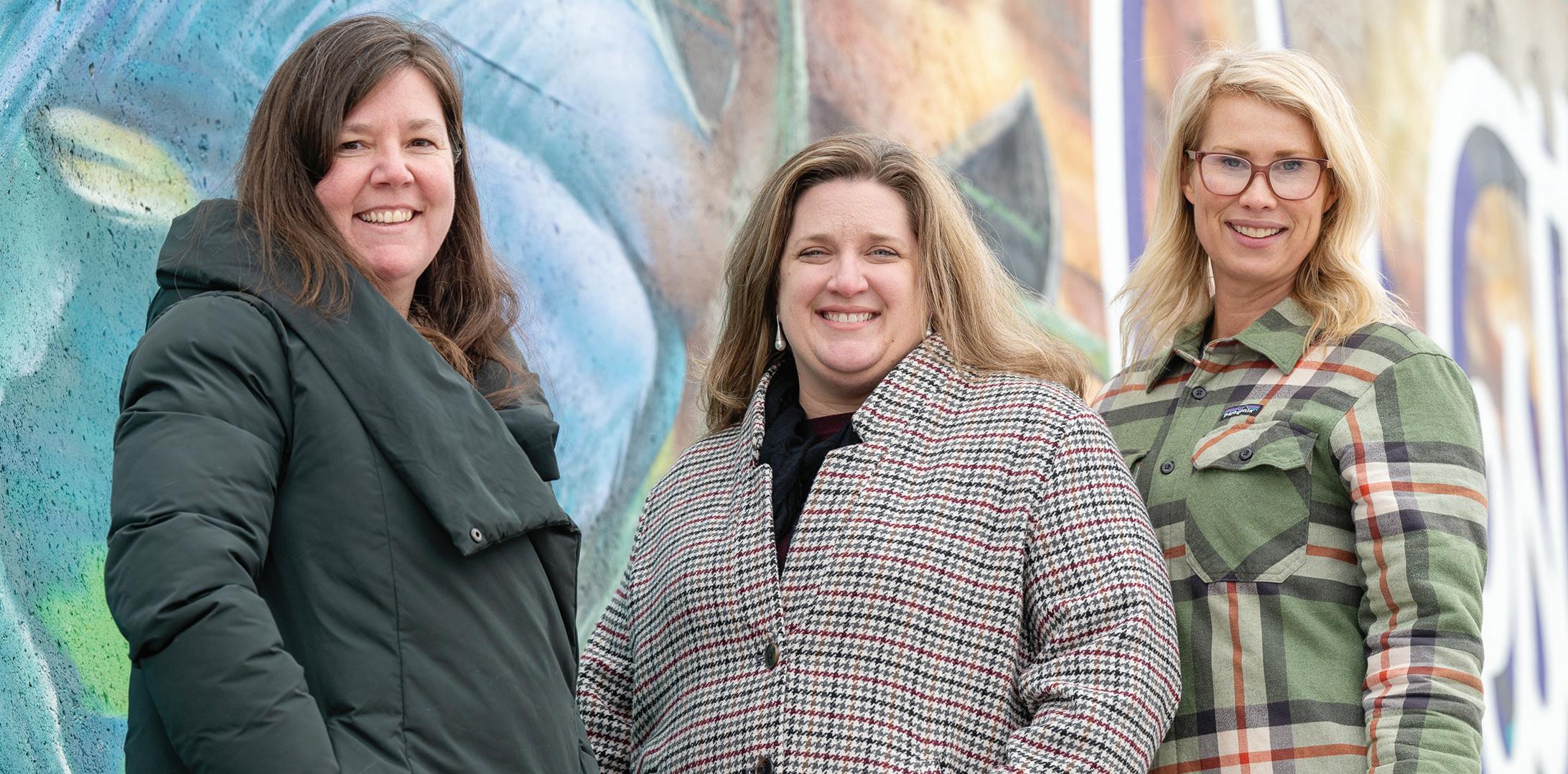
Lincoln says the successes of women like Okum and Laird — who also sit on the BIA’s board of management — makes it easier for others to take the leap.
As business owners themselves, the two agree that learning from fellow entrepreneurs and mentors in the community has been an essential part of their success.
“Whether you run a franchise, bought an existing successful business, or built one from the ground up like Kate and Jacqui, it helps to see the examples of the women who went first,” said Lincoln.
Building community through connection
While the character of the neighbourhood attracts newcomers, the Westboro BIA believes an important part of its role is helping foster a community feeling amongst small businesses, and recognizing the women who took the risk at entrepreneurship is part of that.
Although being your own boss has its perks, business owners often work in isolation. Women business owners, especially, face similar challenges to one another, added Lincoln, but may not know where to go to ask for help.
By celebrating local women in business — and by bringing men and women together — at events like the BIAs annual International Women’s Week panel discussion, it allows community members to share their experiences and challenges and connect on common ground, said Lincoln.
Sparking connections that live on beyond a single event helps foster that community and create more networks of peer support.
Laird, for example, now runs a small group for local women business owners in the health and wellness industry who have lunch every month or two to support each other.
It’s also not uncommon for community members to share business tips and tricks amongst themselves, often connecting through the BIAs weekly newsletter, an e-blast chock full of helpful information, ranging from government grants, to call outs for business advice.
“Our businesses give back in so many amazing ways,” said Lincoln. “Both to the broader community and to one another.”
Both Okum and Laird concur.
“People want to show up for you when you’ve shown up for them,” said Laird. “It’s the beauty of working in Westboro.”
SPRING 2024 OBJ.CA 29
SPONSORED CONTENT
Left to right: Jacqui Okum, owner of the Strawberry Blonde Bakery; Judy Lincoln, executive director of the Westboro Village BIA; and Kate Laird, owner of Love Your Body Fitness
How are you taking advantage of the technology ecosystem at your fingertips?

Find out how EY can support.
OBJ.CA SPRING 2024 30
Ernst & Young LLP. All Rights Reserved. 4338287
©2023
Cybersecurity firm Quantropi adds board members as scaleup continues
BY DAVID SALI david@obj.ca
Cybersecurity startup Quantropi is boosting its bench strength as it girds for battle against encryption-breaking technologies that are expected to become major threats to the world’s financial and communications systems over the next few years.
Poised to soon break out of its prerevenue phase, the six-year-old Ottawa venture has added veteran tech executive Sacha Gera and former Farm Boy co-CEO Jeff York to its board of directors.
Quantropi co-founder and CEO James Nguyen said Gera and York will provide much-needed scaleup expertise as the firm ramps up its fundraising efforts in anticipation of a surge in demand for its
technology, which aims to stop hackers from using ultra-powerful quantum computers to thwart current dataprotection safeguards.
Gera, the chief executive of Ottawabased big-data analytics firm Jatom Systems, previously served as vicepresident of IT and cyber solutions at Kanata-based Calian Group. The Carleton University graduate, who co-founded cloud communications startup Kandy.io, also knows what it’s like to build a company from the ground up.
York, meanwhile, is one of the National Capital Region’s best-known retail entrepreneurs.
As president of Giant Tiger in the early 2000s, York oversaw the discount retailer’s evolution from a regional chain to a national powerhouse. In 2009, he joined


Farm Boy, which expanded to 26 locations in Ontario before being acquired by grocery giant Empire Co. for $800 million in 2018.
Both businessmen are already well acquainted with Quantropi.
York was one of the first angel investors to come on board when Nguyen and co-founder Randy Kuang launched the venture in 2018. Gera was in charge of Calian’s cybersecurity operations when the Kanata firm partnered with Quantropi on a pilot project to test the software with Germany’s Deutsche Telekom, Europe’s largest telecommunications provider.
“Sacha brings that cybersecurity
landscape expertise, and Jeff is Jeff,” Nguyen said in an interview with Techopia. “He’s been a successful businessman, and his network is not one to not respect. He seems to have the midas touch.”
Gera and York join a who’s-who of Ottawa business leaders who are lending their talents to help Quantropi grow. The group also includes longtime Nortel executive Marco Pagani, who chairs the company’s board of directors, and Calian founder and former Ottawa mayor Larry O’Brien, who serves as a senior adviser.
In addition, the young company has attracted notice from Silicon Valley.
Michael Redding, who headed up professional services giant Accenture’s cybersecurity-focused R&D wing before co-founding its billion-dollar incubator, Accenture Ventures, came out of retirement and relocated to Ottawa three years ago to lead Quantropi’s product development efforts as chief technology officer.
That executives and advisers of that stature have hitched themselves to Quantropi’s wagon indicates the powerful allure of its technology.
Quantropi’s backers say the 20-person organization is on the cutting edge of a global effort to stop a looming cyberthreat known as “Y2Q” in its tracks.
Y2Q, or “Year to Quantum,” refers to the point when ultra-powerful quantum computers can “break encryption as we know it,” explained Gera, who said he became “enamoured” with Quantropi’s software as soon as he saw it in action during Calian’s pilot project with Deutsche Telekom.
“Everything we do today is secured with a set of encryption algorithms,” Gera noted. “Y2Q is the day that all of our current data basically becomes open season for bad actors. In the years ahead, it’s going to be everybody’s problem.”
SPRING 2024 OBJ.CA 31
The brightest legal advice. Perlaw.ca 613-238-2022
James Nguyen, CEO and co-founder, Quantropi.

Dallas-area office gives Kinaxis presence in U.S.
BY DAVID SALI david@obj.ca
When Megan Paterson assumed the newly created role of chief operating officer at software powerhouse Kinaxis last summer, expanding the Kanata-based firm’s real estate footprint was among her top priorities.
True to Paterson’s word, Kinaxis recently opened its first permanent office in the United States — a 5,300-squarefoot space in Las Colinas, a planned community in suburban Dallas.
The new office “will serve as a centralized hub where employees and customers can come together to engage, collaborate and work towards solving some of the most pressing challenges facing global supply chains,” the company said in a news release.
The opening of the new U.S. location caps a global expansion drive that’s seen Kinaxis establish a physical presence in the United Kingdom, the Netherlands, India, Singapore and Japan over the past few years as demand for its supply-chain management software has soared.
The firm’s worldwide headcount has more than doubled from roughly 800 in early 2020 to nearly 2,000 today. But onboarding hundreds of employees amid the COVID-19 crisis presented special challenges for Kinaxis — and especially for Paterson, who spent five years as the company’s chief human resources officer before changing C-suite seats six months ago.
Many of those new hires “didn’t get a
chance to meet each other,” Paterson told Techopia. “(In-person interaction) does give you that extra engagement. You build relationships faster.”
Some of America’s biggest corporations — including Ford, General Motors and aerospace giant Lockheed Martin — use Kinaxis’s flagship Rapid Response platform to help them quickly analyze how variables such as changes in the price and availability of parts and other materials will affect everything from production schedules to profit margins.
Yet, until recently, the Kanata firm’s main U.S. address was a UPS store in Chicago. Now, the company finally has a genuine brick-and-mortar hub in one of its most important international markets, in an urban area where Lockheed Martin as well as several major customers in the oil and gas and manufacturing sectors have significant operations.
“We’ve been in the U.S. for years and years, but we’ve never had a physical location,” Paterson explained. “This is our first true presence in the U.S. As we expand, it’s really important for us to have a physical location there.”
The Texas metropolis is also something of a supply-chain software hotbed, she noted.
For example, one of the rapidly growing industry’s brightest stars is o9 Solutions, a Dallas-based firm that was valued at US$2.7 billion in a recent funding round and reported year-over-year annual recurring revenue growth of more than 80 per cent in 2022.
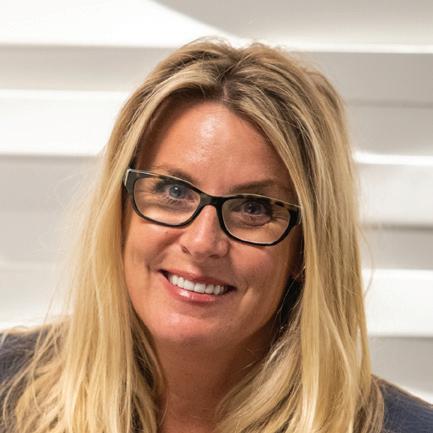
“There’s a lot of supply chain talent in the area. It’s a great tech hub. It’s a great transportation hub as well.”
– Megan Paterson, chief operating officer, Kinaxis.
“There’s a lot of supply chain talent in the area,” explained Paterson, noting that a significant chunk of Kinaxis’s roughly 275 U.S. employees call the Dallas-Fort Worth region home. “It’s a great tech hub. It’s a great transportation hub as well.”
Now, those workers will have a chance
to gather and swap ideas in a place of their own with amenities such as a wellness room, fitness centre, cafe and lounge — a definite step up from the co-working facility that previously served as the firm’s Dallas-area workspace.
Many large tech companies have scaled back their real-estate footprints since COVID as employees became accustomed to working from home. But such is not necessarily the case at Kinaxis, Paterson said, with Dallas being a prime example.
“People wanted to come in, have meetings, get together and the (coworking space) couldn’t accommodate them,” she said.
“We had a lot of buildings to choose from that were already outfitted, that were in beautiful areas, that had great amenities, that could give us more space and actually cost us less than a serviced (shared) office. Financially, it was a no-brainer. Physically, it works because we have more amenities and we could host bigger groups, bigger meetings. It made a lot of sense for us to do this.”
Next on Paterson’s real-estate todo list is finding a bigger office in the Netherlands, where Kinaxis is quickly outgrowing its Rotterdam-based hub that opened about a year ago.
She also thinks the company will soon need to upsize its footprint in Tokyo and consider its next move in Singapore, where the co-working space it now occupies is bursting at the seams.
“Stay tuned for more,” she said with a chuckle.
OBJ.CA SPRING 2024 32


SPRING 2024 OBJ.CA 33
Canada’s
judge shortage
doesn’t have to negatively impact your family – or your business
Family lawyer Sarah Kennedy outlines the benefits of arbitration services
Ashortage of judges is currently hampering the wheels of justice in Canada.
And that is particularly bad news in family law. When sensitive cases get mired by court delays, it can cost the people involved a lot on both a professional and personal level.
That is why the head of Perley-Robertson, Hill & McDougall LLP/s.r.l. family law group Sarah Kennedy is reminding the community that there is another option: arbitration.
“We had a mass exodus of arbitrators in Ottawa recently because the old guard retired en masse,” said Kennedy, who is an accredited arbitrator herself. “Some of us are starting to pick up the baton.”
What is an arbitrator?
Basically an arbitrator is a judge for hire.
It is an option that has always been a critical part of Canada’s legal system, but lately it has been getting more attention due to the shortage of judges — Kennedy says Ontario needs to hire about two dozen judges alone to properly fill the provincial gap.
“An arbitrator’s role is to listen to the lawyers present their cases, and then deliver a judgment,” said Kennedy. Records are kept by the arbitrator, and the judgment is delivered to and enforced by the court.
It is a particularly important option in family law cases due to the sensitive nature of the disputes, and the impact of court delays on families and children.
How can arbitration help?
No one wants to need the services of a family lawyer.
But if you do, ensuring the process goes as smoothly as possible is always the goal. Kennedy says she is hearing frequently from clients they are frustrated being stuck in legal limbo, which helped motivate her to become certified.
Kennedy says the biggest myth about going to court is that it costs less.
In reality, the costs are about the same. Even though you do not have to pay the judge’s salary, court delays lead to paying more for your lawyer’s time.
That is why Kennedy says the three key benefits of hiring an arbitrator are efficiency, expertise and autonomy.
Settling your dispute more efficiently gives you peace of mind while keeping other expenses in check, like carrying costs for properties that need to be sold.
When it comes to expertise, arbitration allows you to hire someone with specific knowledge and skills.
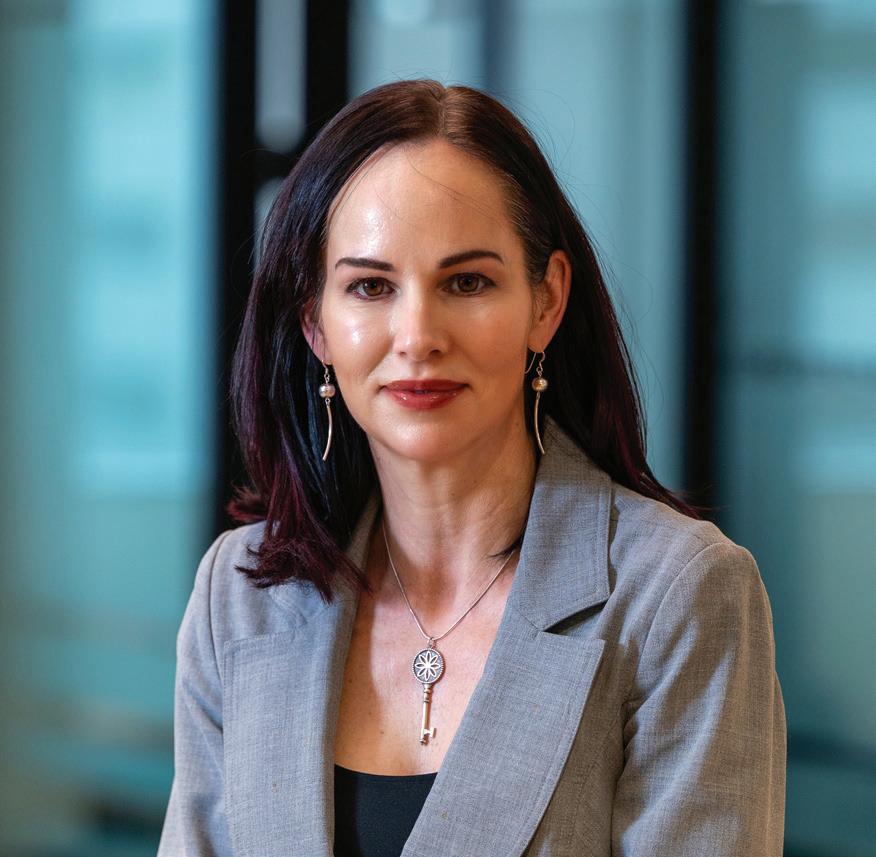
Kennedy says Canadian judges are eminently qualified, but your case may be better served by choosing the best arbitrator for you, rather than hoping you get assigned a judge who has the specific qualifications you need.
“Hiring an arbitrator gives you the freedom to choose someone who understands parenting or complex financial matters, for example,” said Kennedy.
When it comes to autonomy, having the ability to jointly select the person who is best suited to settle your dispute offers everyone involved a semblance of control.
For business leaders in particular, arbitration offers the option to keep sensitive financial information about your business confidential.
“When you go to court, anybody can walk in off the street, go up to the counter and say, ‘Can I have a copy of that file?’ And they will get it,” said Kennedy.
This is a key consideration for someone who owns a privately-held business with partners who understandably want to keep their business’s finances private.
In the end, you can never put a price on peace of mind, she adds.
If you would like to learn more about family law arbitration, visit perlaw.ca.
OBJ.CA SPRING 2024 34
SPONSORED CONTENT
uOttawa’s Kanata North campus marks five years in Canada’s largest tech park
The University of Ottawa is helping to foster a rich tech research & innovation ecosystem while developing the next generation of talent in Kanata North
When
uOttawa took the bold decision to establish its Kanata North campus, it did so with a mission to collaborate, innovate, enhance talent development, and contribute to the growing impact of Canada’s largest tech park. It was the first postsecondary institution to do so.
Expansion in the tech park
Although active in the tech park for decades, uOttawa will mark the fifth year anniversary of the uOttawa Kanata North campus on April 25, 2024.
Over the past five years, uOttawa has reached considerable milestones in Kanata North, such as doubling its initial satellite campus footprint to over 8,000 square feet, standing up the first academic-industry driven research lab (Smart Connected Vehicle Innovation Centre) in the tech park, and unveiling a second uOttawa presence at Hub350 where they are an Anchor Partner. Most recently, adding to this list of milestones, Guy Levesque, uOttawa’s AVP, innovation, partnerships, and entrepreneurship, was also named as the chair of the KNBA Board of Directors in 2023.
“Amazing things happen every day in Kanata North, and that’s why we are here. Serving on the KNBA Board is one of the small ways in which we contribute to being a valued member of this world-leading community. It has been my second home since 2019,” said Levesque.
R&D impact and growth
From partnering with local early-stage companies such as Celestra Health Systems, to SMEs such as Lytica Inc., and larger multinationals like Ciena and Ericsson, uOttawa has seen its collaborations and impact continually grow in Kanata North.
Since 2019, surpassing 60 collaborations, annual research partnerships have doubled resulting in the generation of significant intellectual property

(IP) assets, such as patents, as well as academic articles published by uOttawa researchers profiling the groundbreaking discoveries happening right here in Ottawa.
“By bringing the best of industry together with the best of academia, these research collaborations are solving real-world problems and supporting the launch of market-leading products and solutions,” said Sean Geddes, director, innovation and partnerships.
As part of this rise activity, uOttawa has seen significant expansion in collaborative research areas such as digital transformation that include AI, cybersecurity, quantum technologies, 5G/6G communication, IoT and medtech.
Developing the next generation of talent
It is increasingly recognized that to prepare the next generation of talent, training needs to begin prior to post-secondary education. uOttawa Kanata North and the Faculty of Engineering knew this when they led an OVIN Regional Future Workforce program. This initiative exposed students from underrepresented communities at the elementary school to university level to learn more about the CAV and mobility sector through
courses and training programs, with uOttawa students securing industry internships with companies such as Kinaxis. CO-OP and research internship placements have also been a critical component in developing the next generation of talent. With a base at the uOttawa Kanata North campus, the CO-OP team has experienced enhanced engagement in Kanata North over the last five years with annual placements growing by nearly 100 per cent and representation from five out of 10 uOttawa faculties.
Notably, to further facilitate internships, the CO-OP team has recently adjusted their hiring process to a permanent continuous model, making it quicker and easier for employers in the tech park and beyond.
In addition, uOttawa has been active in enhancing exposure to research-intensive industry internships for graduate students and postdocs. These internships focus on research projects, vary in length, and seek to solve a business problem.
“These internships are incredible opportunities for graduate students and postdocs to get industry experience, while companies can expand their R&D programs and access funding,” said Geddes.
Recognizing the value of these research internships, they were in fact purposefully built into the recently launched the Training and Research in Autonomous Vehicles for Reliable Services in the Air and on Land (TRAVERSAL) program that was launched in September 2023. This program is operated out of the uOttawa Kanata North campus and will train 125+ highly qualified personnel.
Interested in collaborating with uOttawa?
Connect with the uOttawa Kanata North team to explore how you can partner and innovate with them!
SPRING 2024 OBJ.CA 35
— SPONSORED CONTENT —
Shortage of lab space could stunt local biotech sector’s growth
BY DAVID SALI david@obj.ca
Ottawa risks seeing its best and brightest biotech startups leave for greener pastures because the city lacks the infrastructure to help turn promising ideas into viable commercial products, a prominent scientist and entrepreneur says.
“At the end of the day, there’s a lot of innovation, but there’s not a lot of places for those innovators to go,” Jean-Simon Diallo, the founder and CEO of Ottawabased Virica Biotech, told Techopia in a recent interview. “There are some real gaps moving from innovation towards building businesses.”
A major obstacle for burgeoning biotech enterprises looking to scale up is the scarcity of dedicated lab space in the nation’s capital suitable for companies like his, Diallo said.
Founded in 2018, Virica has operated out of a small lab at the University of Ottawa Heart Institute since 2021.
Diallo spent more than a year trying to find an R&D facility in Ottawa big enough to accommodate his growing staff of more than 30 before finally securing 4,000 square feet of lab space at Carleton University’s state-of-the-art Health Sciences Building. The firm plans to open its new gene therapy research and manufacturing hub at Carleton this spring.
“We’re now in a larger, more modern space, and we’re pretty excited,” said Diallo, whose startup signed a threeyear, multimillion-dollar agreement with Carleton that will see Virica help finance ongoing research at the university, as well as provide $15,000 in annual funding for scholarships to support students from groups that have traditionally been underrepresented in the sciences.
LIMITATIONS OF THE ECOSYSTEM
But the circumstances that allowed Virica to land its new home also illustrate the limitations of the capital’s biotech ecosystem. The space became available only after the former occupant, Ottawa-

born Turnstone Biologics, moved out last summer when the company decided to consolidate its operations in San Diego, where it is now based.
Diallo said Virica was “very close to moving to Montreal” before it received a $790,000 grant from the provincial government last spring and began hunting for a new office in the National Capital Region.
The firm looked at leasing a building in the west end, but that facility would have needed a costly fit-up to provide the proper ventilation, power capacity and other prerequisites for producing Virica’s speciality — viral vectors, which deliver new genes that are designed to repair defective genes responsible for diseases such as cancer, muscular dystrophy and hereditary blindness.
“We would have had to invest a significant capital expenditure to actually outfit some space in Kanata somewhere, which costs millions,” Diallo explained. He said relocating to Carleton’s campus was “the only option that didn’t require substantial capital investment.”
Maria DeRosa, dean of Carleton University’s faculty of science, said Virica
has been conducting research at the school and collaborating with its scientists for years, making the new partnership “the perfect fit.”
Having access to a “move-in ready” lab will allow Virica to focus on its core mission — getting its product to market — rather than being forced to pour precious capital into creating a proper work space, she added.
“You can’t understate how valuable that is for a company that’s trying to grow,” DeRosa said. “If you want to do science research, you can’t just move into any office.”
LOOKING FOR SUPPORT IN OTTAWA
Virica, which closed a multimillion-dollar funding round in the fall of 2021 and is now in the midst of another major fundraising drive, is in “a good position” financially right now, Diallo said.
But he fears that the next generation of Ottawa biotech entrepreneurs might not be so fortunate.
Like many young Canadian companies in the field, Virica had to look south for investors willing to back its technology. Diallo worries that dependence on U.S. capital markets will push some biotech
ventures to leave Canada and take their precious IP with them.
“We’re really looking for Canadian support, and we just haven’t seen it,” he said. “That’s been really disappointing.”
Diallo said the problem is particularly acute in Ottawa. Turnstone, once a rising star in the local biotech sector, now trades on the Nasdaq but no longer calls the city home. Most other local biotech startups have yet to really make their mark on the global scene.
“You need a critical mass of those people at some point, and I don’t think we have that,” Diallo argued. “There’s no place for (biotech researchers and entrepreneurs) to congregate.
“All those people will basically leave the city, or they won’t turn their innovations into businesses. They’ll license it to somebody, and then it just disappears. We still haven’t managed to convince the outside world that Ottawa is a really good place to invest and build biotech in.”
A ROLE FOR POST-SECONDARY INSTITUTIONS
DeRosa and Diallo hope the capital’s world-renowned post-secondary institutions will have a significant say in changing that narrative.
Both Carleton and the University of Ottawa are making moves to become bigger players in biotech. Carleton, for example, plans to devote a portion of the remaining 2,000 square feet in Turnstone’s former lab in the Health Sciences Building to a startup incubator it will operate in partnership with Capital BioVentures, a not-for-profit organization that’s trying to grow the nascent sector.
“If we lose all of these great companies with great ideas, it’s a loss for our educational institutions, not just our businesses,” DeRosa said. “I think the more success stories that we can have coming out of Ottawa, then the more compelling case we have … to say, ‘OK, this is something we should be focusing on.’
“We’ve got a lot of great stories happening here. We are training amazing students. I would love for them to stay in Ottawa.”
OBJ.CA SPRING 2024 36
Virica Biotech founders Ken Newport, Ella Korets-Smith and Jean-Simon Diallo. PHOTO SUPPLIED.
Commercial real estate: Strong demand along Hwy. 401, slower recovery in the Valley
BY SHERRY HAAIMA news@obj.ca
While markets along Highway 401 are benefiting from strong demand for industrial properties, areas like the Ottawa Valley are seeing a slower recovery for commercial real estate post-pandemic.
Sherri Cobus of EXP Realty is based in Renfrew and handles a number of commercial real estate properties in the Ottawa Valley. She says the local market is still feeling the effects of the pandemic.
“Since COVID, commercial real estate has definitely taken a hit in Renfrew County and I think it’s just going to take a number of years to pick up again,” said Cobus.
Commercial vacancy rates are high in Pembroke, Renfrew, Arnprior and beyond, she said.
“For sales, not leasing, things are not moving in the Renfrew area, commercialwise, right now. We’ve had things listed on here since 2022 and they’re not moving. I’ve got nine commercial buildings just in town and they’re not moving,” she said.
In Arnprior, there are currently 11 commercial properties listed. Pembroke has a number as well, some that have been listed since 2021.
More people working from home is one of the factors affecting the market, Cobus said.
“I think we’re going to see more people gaining office space again, wanting office space, for advertising, for showrooms, just like it was before COVID. It’s just going to take time,” she said.
Higher interest rates also factor into why commercial properties aren’t selling, she said.
“Once they buy it, they pay property taxes, insurance their rents can’t cover the price of the building,” said Cobus.
One component of the commercial market that is doing well in the area is industrial, including warehouses and storage facilities, she said. “Warehouses are


really booming,” said Cobus.
Perth is an interesting town, said Cobus. While commercial real estate in the area has been on a rollercoaster the past few years, it’s performed well in Perth.
“Given the rising material costs and global supply shortages, new developments were few and far between, increasing the demand for established properties,” she said. “Commercial real estate in Perth has seen a renewed interest from investors located overseas or in the eastern (U.S.), too.”
When it comes to commercial properties such as retail and hotels in the Valley, the future is less positive due to subdued international tourism and reduction in tenant demand, said Cobus.
Steve Piercey, vice-president for advisory and transaction services for CBRE, says that, in areas along Highway 401, there is a trend market watchers are seeing when it comes to industrial property, particularly in Cornwall.
“We are really seeing an increased demand in major transportation corridors, anything along the 401,” said Piercey. “A lot of companies are seeking economical rents outside of the major metropolitan areas like Toronto, Montreal and Ottawa, where rents have basically increased so drastically, so quickly, it’s put them at an economic disadvantage.”
Also, industrial developments taking
place in these larger cities have little to no yard or storage space.
“So, some of these users who require outdoor storage or trailer parking and they’re seeing rents skyrocketing in Montreal, Toronto and Ottawa have looked to these towns as an alternative location,” said Piercey.
As a result, areas like Cornwall, Brockville and Kingston have seen strong demand for industrial space.
“And you’ve seen limited growth in some of these other markets that are not on those transportation corridors, like Hawkesbury or Renfrew, where you’ve still seen some but not the same explosive rent growth,” he said.
Cornwall, in particular, has another desirable feature from a business perspective.
“It’s basically on the border of Quebec and … we’ve seen large groups go there like Wal-Mart, for example … they get all the benefits of being exposed to the Quebec market, without having to deal with any French language laws and limited union influence that Quebec typically has,” said Piercey. “That’s why in Cornwall there’s little to no vacancy there at any particular time.”
While communities such as Renfrew and Arnprior have Highway 17, the trend is not as strong, at least so far.
“You’ve got the highway that goes
all the way up to North Bay, which is a transportation corridor in itself, but most groups launching to access those markets are launching from Ottawa or somewhere close by on a major highway or going up through Peterborough,” said Piercey.
“In some of the major markets, you’re seeing a little bit of increase in vacancy because there’s been so much development happening, but these small tertiary markets, they haven’t had any major new supply come online, so older buildings, buildings that have been around for 10 or 20 years are all filling up again.”
Piercey predicts more of the same for the foreseeable future.
“I expect the trends to continue. Again, because there’s just little to no development in those areas on a large scale to match regular demand. And I expect these other markets Hawkesbury, Renfrew, Perth, all those groups that aren’t on that transportation corridor to stay kind of stagnant as they are,” he said.
In Kingston, broker Martin Skolnick, vice-president of Cushman & Wakefield Kingston, says the area’s commercial real estate supply is limited in all sectors, including office, as demand remains strong.
“Currently, new office and retail is not being built, but multi-unit light industrial continues to be constructed on spec and filled,” he said.
Vacancy rates in all sectors of the Kingston commercial real estate market remain low, said Skolnick, noting demand has remained steady while supply is limited.
“We predict in the year ahead, within the Kingston market, that there will be a continuation of strong fundamentals, including the added pressures created by an increase in population year over year, limited land supply, strong absorption rates for new purpose-built light industrial buildings, and increased interest in the Kingston market from developers and investors being starved for opportunity in the major markets,” he said.
SPRING 2024 OBJ.CA 37 EASTERN ONTARIO
Sherri Cobus, EXP Realty.
Martin Skolnick, Cushman & Wakefield.
Leeds Grenville Entrepreneurs
Loving their Lifestyles
Enjoying life’s natural beauty – aka “stopping to smell the roses” - is what a growing number of Leeds Grenville entrepreneurs do daily. A key attractor for them to be in the 1000 Islands and Rideau Waterways region is the affordable land to fulfil their dreams of doing what they love each and every day.
Brokor Greenhouses: Owner Koren Manneck believes life is good when you’re surrounded every day by flowers and plants. For more than three decades, Koren has built a reputation on growing quality seedlings and plants as well as creating unique floral arrangements in her greenhouses near Cardinal. “It’s passion and creativity wrapped together that drives me,” says Koren. Floral design for weddings and special events is a big part of the business. Koren has a flare for arranging and blending colours. A big hit are her fall bouquets using pumpkins as vases. She shares her talent in many popular workshops like BYOV - Bring Your Own Vase. “Our philosophy is to offer a local, naturally grown product, with biological controls that are free of chemicals,” says Koren. She credits customer loyalty, product quality and a strong work ethic to Brokor’s success and longevity.
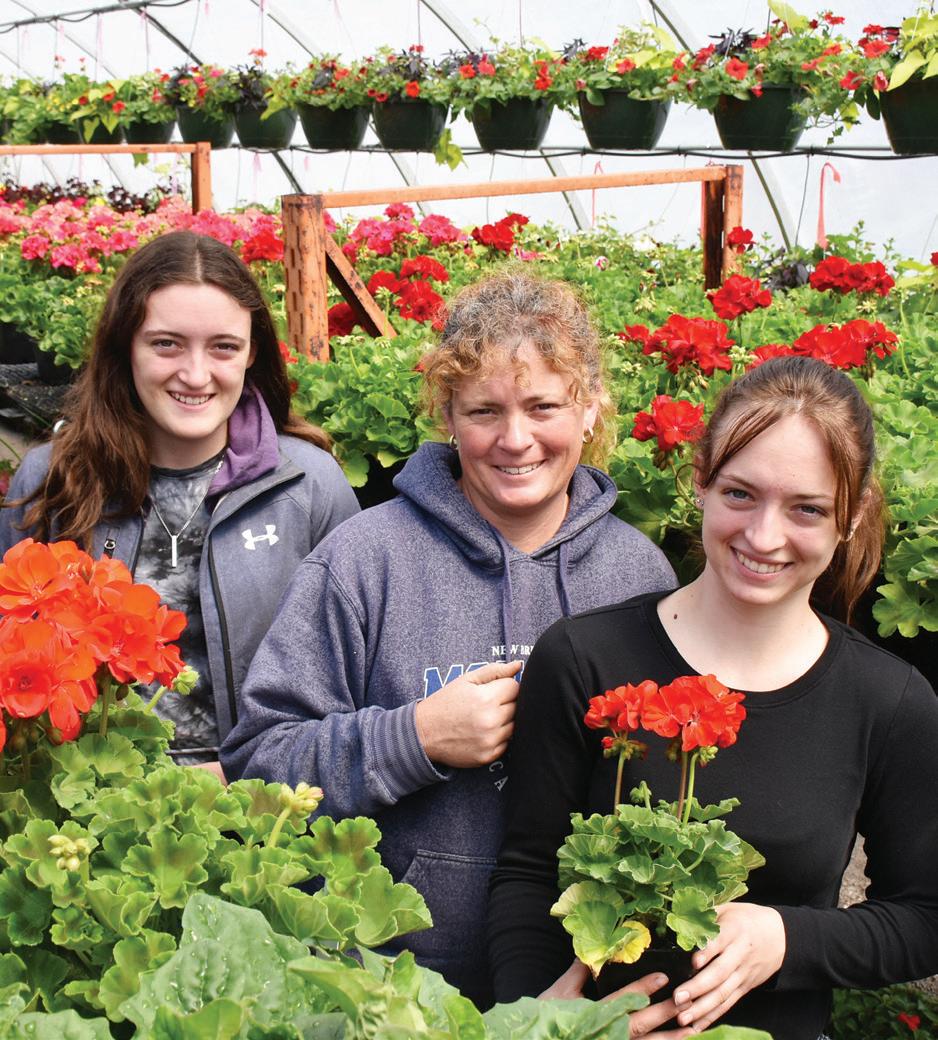

Flowers of the Field:
Brenda Visser’s stunning bouquets have near zero travel time from greenhouse to local customers because they are grown right in Augusta Township, just off Highway 401. “Our flowers are cut and sold immediately from our farm, which means the most enjoyable and longer vase life for you,” says Brenda. “Historically Canadians have relied on flowers from afar, particularly during the colder months, but we can do it right here!” Brenda operates an all-season, high-yield passive solar greenhouse for year-round blooms. “There is a real need for beauty in our lives and flowers can make a real difference,” she says. In the warmer months, Brenda grows thousands of field flowers, from Zinnias to Astilbe, Dahlias and Asters. She is an advocate of eco-friendly production and bio sustainability. Plans to expand her greenhouse and add trails have already begun.

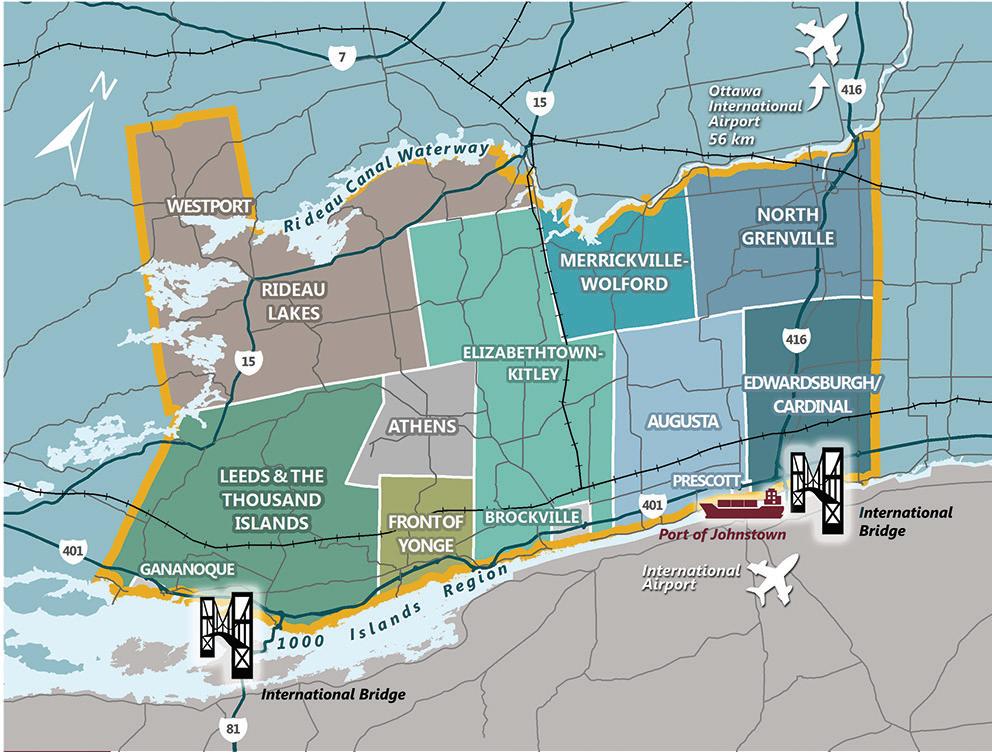
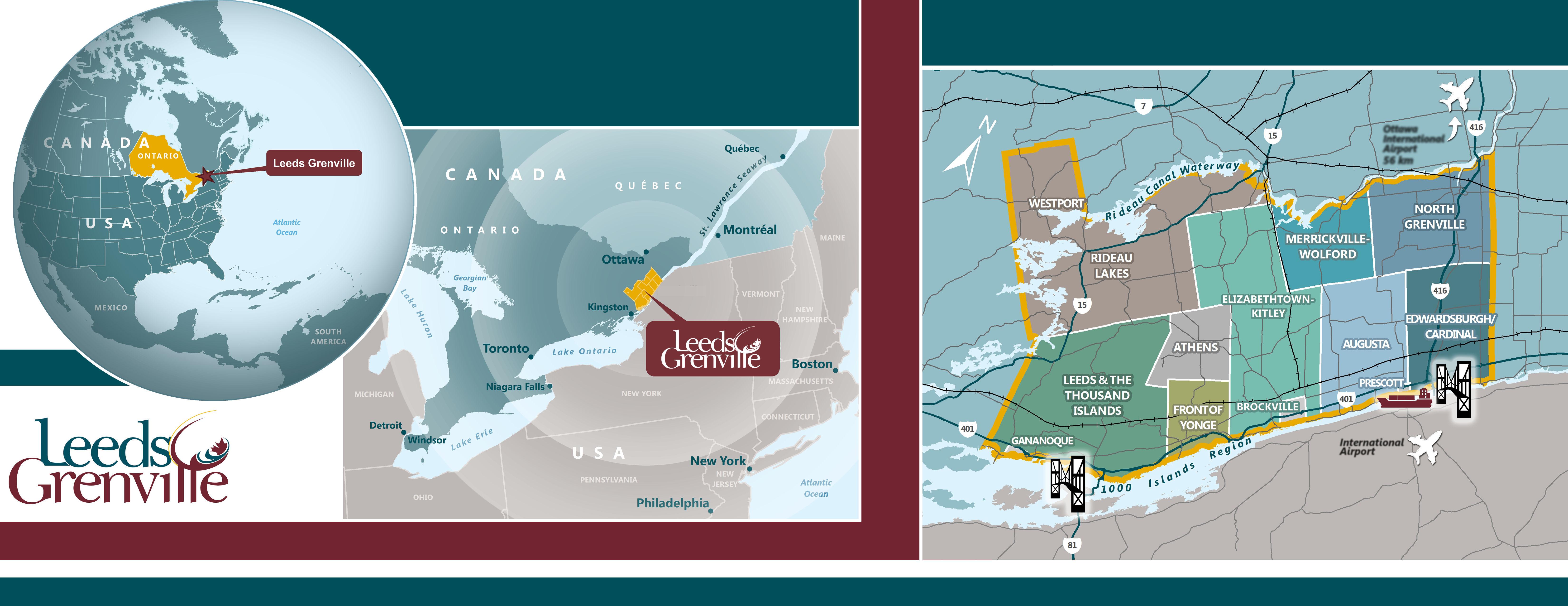



www.investleedsgrenville.com | www.discoverleedsgrenville.com | econdev@uclg.on.ca | 613-342-3840 ext. 5365 | 1-800-770-2170
her story HERE Read her story HERE
Read
Feds invest $4M in Kingston facility that processes rare earth elements
BY OBJ STAFF news@obj.ca
The federal government has invested $4.2 million into a Kingston facility that processes the critical minerals needed for such things as electric vehicle batteries.
The investment in Ucore Rare Metals Inc. will help scale-up and demonstrate the commercial efficacy of the company’s pending patent and Canadian-developed rare earth element separation technology platform under simulated commercial conditions.
Instead of shipping Canada’s concentrates overseas for foreign separation, Ucore’s project will support Canada’s direct participation in the growing market of heavy and light rare earth elements. This funding will also provide employment opportunities for skilled trades and professional occupations, including Indigenous communities, the news release stated.
In addition to electric vehicles, rare earth elements are also required for wind turbines and a variety of electronics.
“This … demonstration project shines a light on the lesser-known but equally important aspect of the critical metals supply chain in North America — rare earth elements,” said Mike Schrider, vice-president and chief operating officer with Ucore, in a news release.
“A rare earth permanent magnet motor is by far the most efficient means of converting electrical energy from batteries to mechanical energy for electric vehicles and, in reverse, wind turbines … Through this project, we are moving Canada closer to fully incorporating these critical supply chain metals on a significant commercial scale.”
Through the project, Ucore will produce
high-purity samples of rare earth elements (neodymium and praseodymium) and small batch samples of rare earth oxides to meet potential consumer needs. The project will attain these samples over a six-month period of processing approximately 13 to 15 tonnes of total rare earth oxides in Ucore’s facility in Kingston.
Ucore will work with local companies including Cyclic Materials and Kingston Process Metallurgy.
Through this project, we are moving Canada closer to fully incorporating these critical supply chain metals on a significant commercial scale.
The investment is funded through the Critical Minerals Research, Development and Demonstration (CMRDD) program.
“Canada is a reliable, stable and secure supplier for critical minerals and the products they enable — we have what it takes to thrive in the low-carbon future, from abundant resources to skilled workers.
Investments like this one are precisely what we need to see in order to seize the economic opportunities of the low-carbon future while creating good local jobs in communities like Kingston,” said Kingston and the Islands MP Mark Gerretsen.

$5000 ST LAWRENCE RIVE R grants available for
healthcare professionals
Physicians, Physicians Assistants, Nurse Practitioners or Nurses who sign a contract with a medical agency located within Stormont Dundas and Glengarry Counties can win one of five $5000 grants.
Physicians, Physicians Assistants, Nurse Practitioners or Nurses who sign a contract with a medical agency located within Stormont Dundas and Glengarry Counties can win one of five $5000 grants.
Physicians, Physicians Assistants, Nurse Practitioners or Nurses who sign a contract with a medical agency located within Stormont Dundas and Glengarry Counties can win one of five $5000 grants.
One additional $5000 grant is available for physicians looking for positions in the Township of Russell.
One additional $5000 grant is available for physicians looking for positions in the Township of Russell
One additional $5000 grant is available for physicians looking for positions in the Township of Russell. For information about the Great River Ontario Health Team visit groht.ca

For information about the Great River Ontario Health Team visit groht.ca
For information about the Great River Ontario Health Team visit groht.ca
SPRING 2024 OBJ.CA 39
EASTERN ONTARIO
Apply
GreatRiverDOCS.ca
$5000 ST LAWRENCE RIVE R grants available for
Today!
For testimonials and contest details visit: healthcare professionals
GreatRiverDOCS.ca
testimonials
$5000 ST LAWRENCE RIVE R grants available for Apply Today!
For
and contest details visit: healthcare professionals
Apply Today! GreatRiverDOCS.ca For testimonials and contest details visit:
Oakview Capital Inc. is the solid option for your real estate investment portfolio
Every commercial property they acquire is managed from start to finish
You know a real estate investment is sound when your advisors put their own money behind it.
And that’s what you’ll get with Oakview Capital Inc., a commercial real estate investment firm based in Ottawa that offers high-net-worth individuals, family offices, and institutional investors a stable and secure option to preserve their capital.
“Our due diligence process is one of the best in our sector,” said founder and managing partner Ryan Barresi, who learned the syndication ropes from mentors at Properties Group and his experience at one of the world’s largest real estate firms, Cushman and Wakefield. “I’ve had family offices tell me it’s one of the best diligence processes they have seen.”
The result is a conservative approach that offers an often hard-to-find piece of the investment puzzle.
Or if you prefer a sports metaphor, Barresi says “we hit singles and doubles all day long.”
Know your client
What’s critical about Oakview’s due diligence is that it’s not just about finding the best properties — it’s about matching what they do to an investor’s goals, and ensuring it’s the right real estate investment vehicle for the investor.
Which is why Barresi takes the investment role “know your client” seriously.
With most of Oakview’s clients arriving as referrals, the team gets acquainted by emailing their prospects a form that helps them confirm they’re an accredited investor.
Once that’s established, the Oakview team likes to meet potential investors in-person — as many times as needed — to understand their goals. If there’s a mismatch, they’ll suggest another investment vehicle.
“If you’re looking for something short-term like flipping properties or development, we’re not for you,” said Barresi. “Long-term growth is in our DNA.”
That very approach is reflected in their business model, which requires a 7 to 10-year commitment, except for unavoidable situations like a death or divorce.
Know your investment team
Once everyone is confident their fundamental goals are aligned, it’s time for the client to get to know the investment team at Oakview.
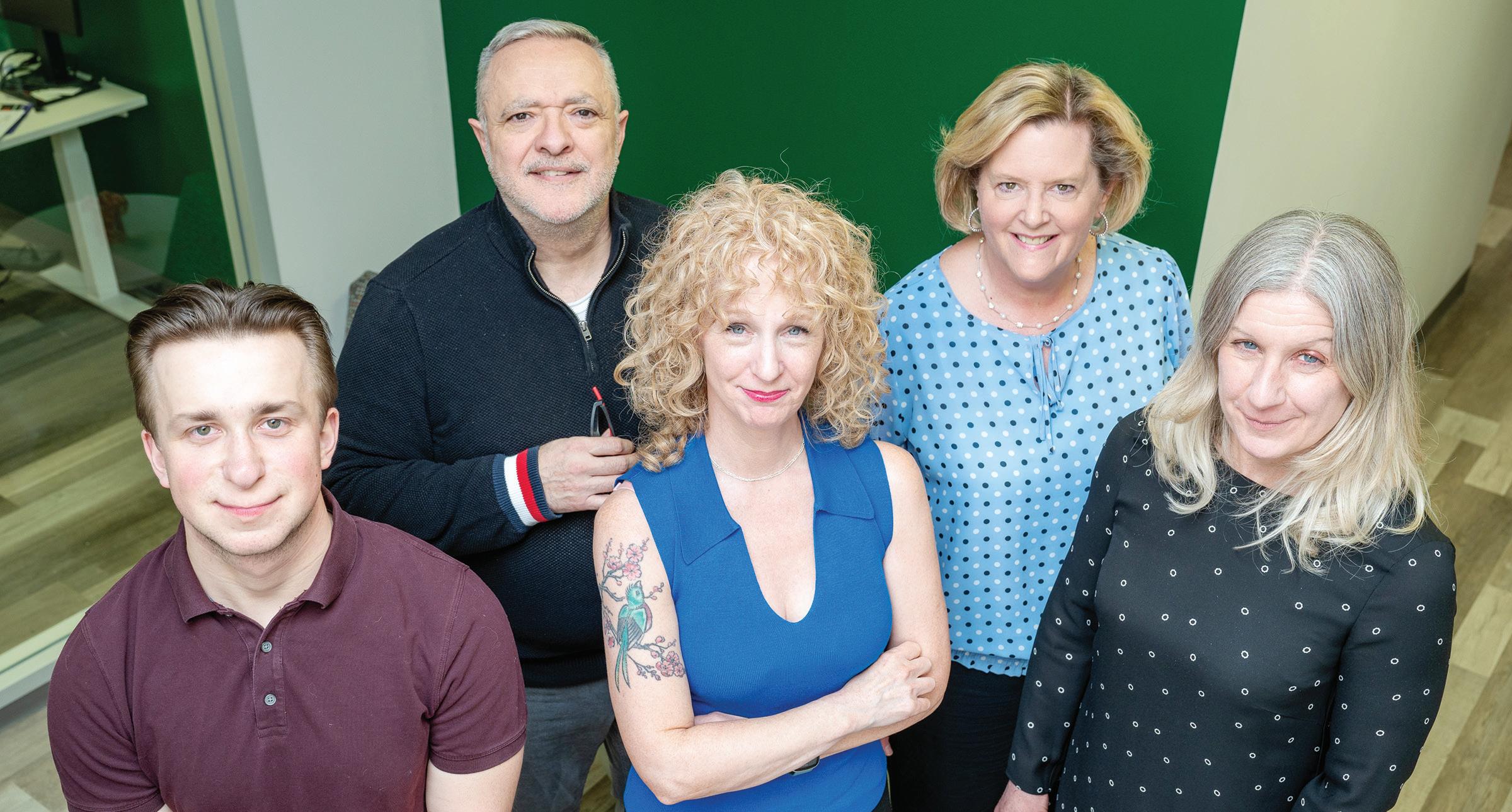
This is much easier than if you were buying shares in a REIT, for example.
Oakview makes their process completely transparent because their investors are “co-owners’’ of the buildings. That’s why they send prospects timely information about their portfolio of commercial properties.
But there’s an additional proviso they insist upon to ensure their clients are fully informed about what they’re investing in.
“Here’s the kicker: they have to get an independent legal review,” said Barresi. And once the lawyers have reviewed and approved the deal, Oakview’s commitment to transparency continues with quarterly reports on all their buildings.
Barresi says the communication is appreciated. One of their family office investors was thrilled to receive easyto-digest ledgers and quarterly reports for every building. “He said ‘If banks could figure out how to simplify things like your group, they’d save a lot of paper,’,” Barresi said.
For Oakview, compiling this information is simple because they’re also stewards of every building they acquire from start to finish.
“We’re very hands-on,” said Victoria Blackburn, COO. “We manage the properties on the accounting,
operational and leasing side of things.” And the fact that Oakview invests with their investors ensures accountability.
Ultimately the vision for Oakview Capital Inc. is continued growth. “In November we bought a 95,000 square foot building which leapt us to the next level,” said Barresi.
In the end, the reason Oakview succeeds isn’t just because they choose real estate investments that merit their own money. It’s because of the relationships they build with their investors, coupled with the ability to give back to the community.
“My personal investment in Oakview Capital is a component of my strategic investment strategy,” said Richard Kluska, CEO, IP Private Wealth. “With the acquisition of select real estate assets, and the professional management of these assets; Oakview provides the investor with tax effective cash flows and the potential of future gains. A good asset to a diversified portfolio.”
If you’re interested in learning more about the commercial investment properties currently being managed by Oakview Capital Inc., reach out today.
Please contact Ryan at ryan@oakviewcapitalinc.com to inquire about upcoming investments.
OBJ.CA SPRING 2024 40
SPONSORED CONTENT
First row is Justin McDonell Barresi, Lisa Ryan, Victoria Blackburn. Back Row, Ryan Barresi and Nancy Luberti.

Raised for Ronald McDonald House Charities Ottawa thanks to your support at Skifest 2024










Platinum S PO N S O RS Gold S PO N S O RS Silver S PO N S O RS Bronze S PO N S O RS











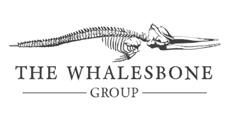

SPRING 2024 OBJ.CA 41
Track Media Online Auction
EQ
RBC
TD Commercial
GGFL,
Smith + Andersen
CIBC Private Wealth
Modern Niagara
RBC Dominion Securities
Pella Windows and Doors
Chabot Grant Thornton
Waterford
Group
KPMG & MARANT
BMO Nesbitt Burns
Doran Contractors Ltd. Pinchin Ltd.
Monument-Urso
Mistral General Contracting In-Kind S PO N S O RS
by
Wesley Clover Foundation • Stewart Title •
Homes •
PH&N Investment Counsel •
Banking •
LLP
•
•
•
•
Raymond
•
Property
•
•
•
•
•
$215,000 presented


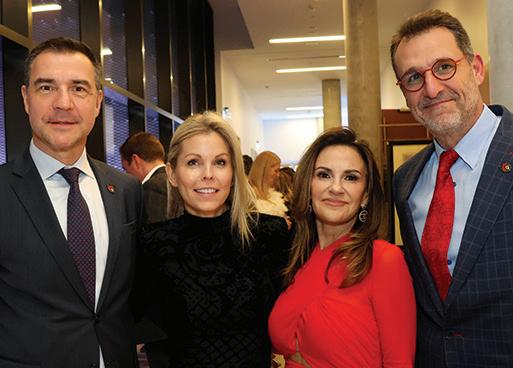
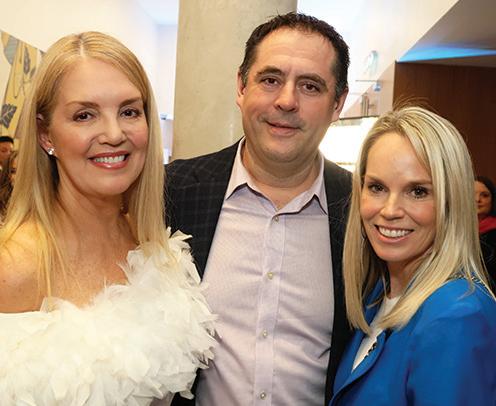

SNOWSUIT FUND
Cold front hits but warm hearts prevail at SnowBall
The recent warm weather could have clashed with the SnowBall and its charitable cause, but tumbling temperatures quickly proved otherwise.
“It will all make sense soon,” event committee co-chairs Mark Ford, service delivery manager at RHEA Group, and Lise Clément, principal at Lansdowne Technologies, said of an approaching cold front that would serve as a chilly reminder for why partygoers had gathered that night: to help ensure every child in Ottawa has access to a decent snowsuit.

Ottawa winters demand appropriate outdoor attire. “We’re a community that likes to embrace winter,” Martin Masse, vice chair of the board for the Snowsuit Fund of Ottawa, told OBJ.social. Masse is an international trade law lawyer and senior partner at Norton Rose Fulbright, among the major sponsors of this year’s SnowBall.
The sold-out SnowBall surpassed last year ’s total, raising $95,000 and selling out two weeks in advance. More than 400 people attended the event.

OBJ.CA SPRING 2024 42 OBJ.social OBJ.social is supported by the generous
of Mark Motors and
Properties Inc.
AND
BY
patronage
Marilyn Wilson Dream
STORIES
PHOTOS
CAROLINE PHILLIPS
Caitlyn Carrol, Heather Williams and Saxon House.
Mayor Mark Sutcliffe with Sandra Plagakis. Ashley Verreault, Susan Dennison and Azhra McMahon.
Krista Kealey, Lianne Laing, Taryn Gunnlaugson and Dean Usher.
Steve Staios, Susannah Staios, Lucie Andlauer and Michael Andlauer.
Mary Ciancibello, Alok Ahuja and Danika Ahuja.
Jacqueline Belsito, Chris Phillips and Erin Phillips.

SHEPHERDS OF GOOD HOPE
Taggart Parkes family boosts end-homelessness campaign with $1M gift
The Shepherds of Good Hope Foundation had a million reasons to be thankful but, considering OBJ readers have places to go and people to see, we’ll focus on just a select few.
The non-profit organization kicked off its $5-million capital campaign for a new supportive housing residence in the ByWard Market by announcing a $1-million gift from the Taggart and Parkes family.
They support a wide range of charitable causes through their philanthropy and volunteer leadership. They also own Taggart Group of Companies, which is involved in building new homes and communities for
families in the region.
In addition to the large donation, Mary Taggart, editor-in-chief of Ottawa at Home, and her husband, Chris Taggart, president of Tamarack Homes and Tartan Homes, have also taken on the role of co-chairs for the SGH Foundation’s campaign in support of the eight-storey, multi-purpose supportive housing residence currently under construction at 216 Murray St.
The couple gathered with dozens of community leaders at an intimate reception held at Coconut Lagoon restaurant, where they were officially welcomed by SGH Foundation CEO David Gourlay and his team.
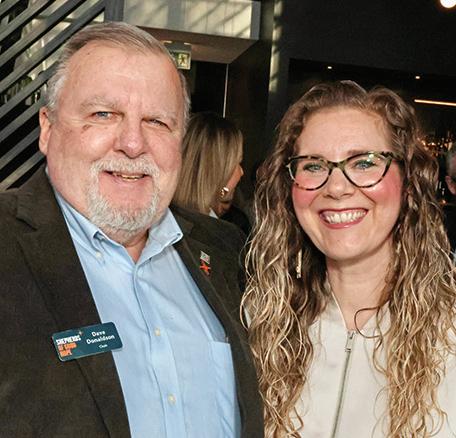


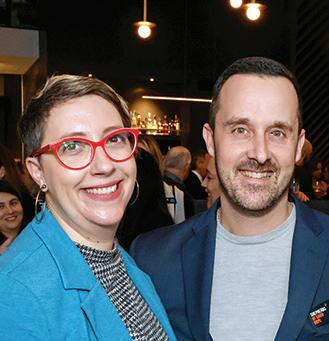
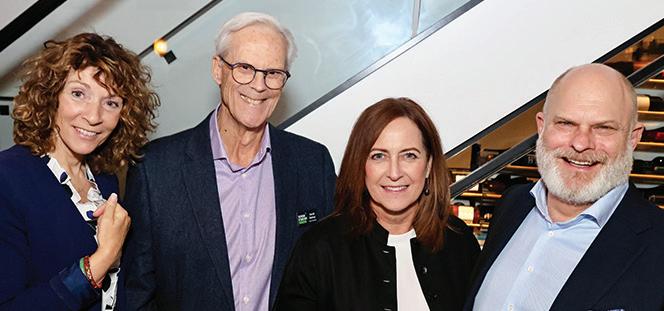
SPRING 2024 OBJ.CA 43
David Gourlay, Mary Taggart, Chris Taggart and Joe Thottungal.
Ariel Troster and Stephen Bartolo.
Jim Watson and Don Masters.
Joanne Kudakiewicz and David Feldberg.
Karen Meades, David Rattray, Deirdre Freiheit and Shawn Hamilton.
Dave Donaldson and Kassondra Walters.
Ottawa’s Finest Portfolio of Luxury Homes
613.842.5000 | dreamproperties.com

$2,850,000 Rockcliffe Park Dream Home


OBJ.CA SPRING 2024 44
Reba Wilson REALTOR® / Broker of Record
Marilyn Wilson Owner / REALTOR®

CANADIAN CULINARY CHAMPIONSHIP
Canada’s Great Kitchen Party rocks downtown Ottawa
Last fall, Canada’s Great Kitchen Party went on a gastronomic adventure, hitting 10 cities across Canada in search of culinary excellence.
The extended but enticing road trip reached its destination in February, arriving in Ottawa for the national finale of its Canadian Culinary Championship. Contenders — who hailed from Whistler to St. John’s, and major cities in between — earned their spots through regional competitions held during September, October and November.
Representing Ottawa was Raghav Chaudhary, executive chef of downtown fine-dining restaurant Aiana.
The night was much more than just a cooking contest, however. It kicked



off with a colossal cocktail party at the Shaw Centre with some 550 attendees. Guests indulged in the culinary creations of the finalists. More than 50 students of Algonquin College volunteered.
There was also wine and beer, including Ottawa’s own KIN Vineyards. It’s owned by Lorraine Mastersmith, the firm managing partner at Gowling WLG, and Shaun McEwan, CEO of defence and security technology company ADGA.
Co-chairing the event were Kevin MacIntosh, CEO of coastal engineering firm Baird & Associates; Mike Taggart, president of Taggart Construction; and Mike Dimitriou, regional managing partner for national accounting and business consulting firm MNP.





SPRING 2024 OBJ.CA 45 OBJ.social OBJ.social is supported by the generous patronage of Mark Motors and Marilyn Wilson Dream Properties Inc. STORIES AND
BY
PHOTOS
CAROLINE PHILLIPS
Eric Agyemang, Mark Zekulin and Kate Agyemang.
Raghav Chaudhary.
Steven Page.
Brian Johnson and Tim Campanale.
Casey Sorrill, Stacey Mallory, Logan Iwanoff, Sidney Crossman, Natasha Cammaert, James McLaughlin, Kathryn Tremblay and Kirsty Howe.
Yannick La Salle and Sara Romain.
Nicole Loreto with Lisa Pasin.
Nathalie Feldberg, David Feldberg, Anil Mital and his wife, Monica.
Mitch Miller with Jeff Todd.
PEOPLE ON THE MOVE

Amanda Gordon leaves KNBA to join CLV Group
At first glance, human resources expert Amanda Gordon’s leap from the world of tech to her new job at real estate firm CLV Group might seem like a bit of a head-scratcher.
After all, software developers and housing developers don’t have a lot in common on the face of it.
But Gordon, who just finished an 18-month stint as interim president and CEO of the Kanata North tech park’s business association, sees a direct link between building worldclass tech companies and building new apartment complexes where decaying government offices once stood, as CLV is doing in downtown Ottawa right now.
One of Gordon’s tasks at the Kanata North Business Association was overseeing the drafting of the organization’s new five-year strategic plan. In helping craft the document, she did a lot of research into what makes a “vibrant community” that attracts the best and brightest engineers, software architects and other highly skilled tech workers. She came to realize that a strong tech ecosystem goes “beyond just people working.”
If a city doesn’t bring other attributes to the table besides great career opportunities — think topnotch restaurants, cultural attractions and nightlife — it will lose the global
battle for talent more often than not.
“It’s not just about Kanata North,” says Gordon. “It has to be about our whole offering … and that includes downtown Ottawa. The core needs help.”
So when Mike McGahan, the head of the CLV Group, called Gordon last fall to ask if she’d be interested in taking on the role of chief talent officer at his company, she knew she’d found her next career challenge.
It helped that McGahan and his team had been Gordon’s clients during her tenure as a partner at executive search firm Boyden from 2019-21. But the HR guru — whose other career stops include Nokia, Stratford Managers and software firm Rewind — also saw an opportunity to play a leading role in a business she believes is helping to reshape Ottawa’s future.
As city leaders look for ways to bring some swagger back to the capital’s ailing core, office-toresidential conversions are often touted as a major piece of the puzzle. CLV has been at the forefront of Ottawa’s nascent conversion movement by launching projects aimed at turning empty office towers into residences teeming with vibrant, young professionals.
The enthusiasm in Gordon’s voice is palpable as she discusses the work that McGahan and CLV’s partners such as architect Andrew Reeves are doing at developments like The Slayte, an upscale rental apartment complex in an 11-storey former government building on Albert Street that was completed last year.
Next up for CLV is converting another vacant former government office, the Narono Building at 360 Laurier Ave. W., into 139 rental apartments. Gordon says projects like these have the potential to change the way people think about the National
It’s not just about Kanata North. It has to be about our whole offering … and that includes downtown Ottawa. The core needs help.
Capital Region — and make it a more attractive home for workers of all kinds, including the next generation of tech entrepreneurs.
“I thought, ‘This will actually give me the opportunity to really lean in on Ottawa,’” says Gordon, who splits her time between homes in Stittsville and Chelsea. “If I’m going to be building great teams … I’ve done it in the tech space, and this would be a stretch for me to come over to the development side.
“Mike is an incredible leader and I respect him. The culture and his values speak to me. It was an easy decision to come over and join (CLV).”
Gordon, who joined the company earlier this month, admits she faces a “huge” learning curve in getting up to speed on the ins and outs of the real estate business.
“I feel like it’s a pinch-me moment for sure. I can’t think of a more exciting chief talent officer role in the city, in the province, in Canada, frankly, right now because of the project that’s in front of us.”
— by Caroline Phillips
OBJ.CA SPRING 2024 46
Amanda Gordon, chief talent officer, CLV Group. FILE PHOTO.




SPRING 2024 OBJ.CA 47













OBJ.CA SPRING 2024 48














 Michael Curran Publisher
Michael Curran Publisher
 Anne Howland Editor in Chief
Anne Howland Editor in Chief














































































































































